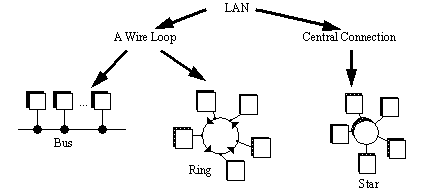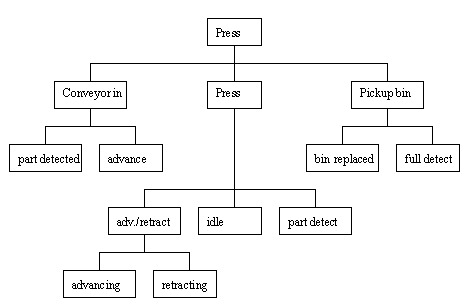COMBINED GLOSSARY OF TERMS
A
abort - the disrupption of normal
operation.
absolute pressure - a pressure
measured relative to zero pressure.
absorption loss - when sound or
vibration energy is lost in a transmitting or reflecting medium. This is the
result of generation of other forms of energy such as heat.
absorbtive law - a special case of
Boolean algebra where A(A+B) becomes A.
AC (Alternating Current) - most
commonly an electrical current and voltage that changes in a sinusoidal pattern
as a function of time. It is also used for voltages and currents that are not
steady (DC). Electrical power is normally distributed at 60Hz or 50Hz.
AC contactor - a contactor designed
for AC power.
acceptance test - a test for
evaluating a newly purchased system's performance, capabilities, and conformity
to specifications, before accepting, and paying the supplier.
accumulator - a temporary data
register in a computer CPU.
accuracy - the difference between an
ideal value and a physically realizable value. The companion to accuracy is
repeatability.
acidity - a solution that has an
excessive number of hydrogen atoms. Acids are normally corrosive.
acoustic - another term for
sound.
acknowledgement (ACK) - a response
that indicates that data has been transmitted correctly.
actuator - a device that when
activated will result in a mechanical motion. For example a motor, a solenoid
valve, etc.
A/D - Analog to digital converter
(see ADC).
ADC (Analog to Digital Converter) - a
circuit that will convert an analog voltage to a digital value, also refered to
as A/D.
ADCCP (Advanced Data Communications
Procedure) - ANSI standard for synchronous communication links with primary and
secondary functions.
address - a code (often a number)
that specifies a location in a computers memory.
address register - a pointer to
memory locations.
adsorption - the ability of a
material or apparatus to adsorb energy.
agitator - causes fluids or gases to
mix.
AI (Artificial Intelligence) - the
use of computer software to mimic some of the cognitive human processes.
algorithms - a software procedure to
solve a particular problem.
aliasing - in digital systems there
are natural limits to resolution and time that can be exceeded, thus aliasing
the data. For example. an event may happen too fast to be noticed, or a point
may be too small to be displayed on a monitor.
alkaline - a solution that has an
excess of HO pairs will be a base. This is the compliment to an acid.
alpha rays - ions that are emitted as
the result of atomic fission or fusion.
alphanumeric - a sequence of
characters that contains both numbers and letters.
ALU (Arithmetic Logic Unit) - a part
of a computer that is dedicated to mathematical operations.
AM (Amplitude Modulation) - a fixed
frequency carrier signal that is changed in amplitude to encode a change in a
signal.
ambient - normal or current
environmental conditions.
ambient noise - a sort of background
noise that is difficult to isolate, and tends to be present throughout the
volume of interest.
ambient temperature - the normal
temperature of the design environment.
analog signal - a signal that has
continuous values, typically voltage.
analysis - the process of review to
measure some quality.
and - a Boolean operation that
requires all arguments to be true before the result is true.
annealing - heating of metal to
relieve internal stresses. In many cases this may soften the material.
annotation - a special note added to
a design for explanatory purposes.
ANSI (American National Standards
Institute) - a developer of standards, and a member of ISO.
APF (All Plastic Fibre cable) - fiber
optic cable that is made of plastic, instead of glass.
API (Application Program Interface) -
a set of functions, and procedures that describes how a program will use another
service/library/program/etc.
APT (Automatically Programmed Tools)
- a language used for directing computer controlled machine tools.
application - the task which a tool
is put to, This normally suggets some level of user or real world
interaction.
application layer - the top layer in
the OSI model that includes programs the user would run, such as a mail
reader.
arc - when the electric field
strength exceeds the dielectric breakdown voltage, electrons will flow.
architecture - they general layout or
design at a higher level.
armature - the central rotating
portion of a DC motor or generator, or a moving part of a relay.
ARPA (Advanced Research Projects
Agency) - now DARPA. Originally funded ARPANET.
ARPANET - originally sponsored by
ARPA. A packet switching network that was in service from the early 1970s, until
1990.
ASCII (American Standard Code for
Information Interchange) - a set of numerical codes that correspond to numbers,
letters, special characters, and control codes. The most popular standard
ASIC (Application Specific Integrated
Circuit) - a specially designed and programmed logic circuit. Used for medium to
low level production of complex functions.
aspirator - a device that moves
materials with suction.
assembler - converts assembly
language into machine code.
assembly language - a mnemonic set of
commands that can be directly converted into commands for a CPU.
associative dimensioning - a method
for linking dimension elements to elements in a drawing.
associative laws - Boolean algebra
laws A+(B+C) = (A+B)+C or A(BC) = (AB)C
asynchronous - events that happen on
an irregular basis, and are not predictable.
asynchronous communications (serial)
- strings of characters (often ASCII) are broken down into a series of on/off
bits. These are framed with start/stop bits, and parity checks for error
detection, and then send out one character at a time. The use of start bits
allows the characters to be sent out at irregular times.
attenuation - to decrease the
magnitude of a signal.
attenuation - as the sound/vibration
energy propagates, it will undergo losses. The losses are known as attenuation,
and are often measured in dB. For general specifications, the attenuation may be
tied to units of dB/ft.
attribute - a nongraphical feature of
a part, such as color.
audible range - the range of
frequencies that the human ear can normally detect from 16 to 20,000 Hz.
automatic control - a feedback of a
system state is compared to a desired value and the control value for the system
is adjusted by electronics, mechanics and/or computer to compensate for
differences.
automated - a process that operates
without human intervention.
auxiliary power - secondary power
supplies for remote or isolated systems.
AWG (American Wire Gauge) - specifies
conductor size. As the number gets larger, the conductors get smaller.
B
B-spline - a fitted curve/surface
that is commonly used in CAD and graphic systems.
backbone - a central network line
that ties together distributed networks.
background - in multitasking systems,
processes may be running in the background while the user is working in the
foreground, giving the user the impression that they are the only user of the
machine (except when the background job is computationally intensive).
background suppression - the ability
of a sensing system to discriminate between the signal of interest, and
background noise or signals.
backplane - a circuit board located
at the back of a circuit board cabinet. The backplane has connectors that boards
are plugged into as they are added.
backup - a redundant system to
replace a system that has failed.
backward chaining - an expert system
looks at the results and looks at the rules to see logically how to get
there.
band pressure Level - when measuring
the spectrum of a sound, it is generally done by looking at frequencies in a
certain bandwidth. This bandwidth will have a certain pressure value that is an
aggregate for whatever frequencies are in the bandwidth.
base - 1. a substance that will have
an excess of HO ions in solution form. This will react with an acid. 2. the base
numbering system used. For example base 10 is decimal, base 2 is binary
baseband - a network strategy in
which there is a single carrier frequency, that all connected machines must
watch continually, and participate in each transaction.
BASIC (Beginner's All-purpose
Symbolic Instruction Code) - a computer language designed to allow easy use of
the computer.
batch processing - an outdated method
involving running only one program on a computer at once, sequentially. The only
practical use is for very intensive jobs on a supercomputer.
battery backup - a battery based
power supply that keeps a computer (or only memory) on when the master power is
off.
BAUD - The maximum number of bits
that may be transmitted through a serial line in one second. This also includes
some overhead bits.
baudot code - an old code similar to
ASCII for teleprinter machines.
BCC (Block Check Character) - a
character that can check the validity of the data in a block.
BCD (Binary Coded Decimal) -
numerical digits (0 to 9) are encoded using 4 bits. This allows two numerical
digits to each byte.
beam - a wave of energy waves such as
light or sound. A beam implies that it is not radiating in all directions, and
covers an arc or cone of a few degrees.
bearing - a mechanical support
between two moving surfaces. Common types are ball bearings (light weight) and
roller bearings (heavy weight), journal bearings (rotating shafts).
beats - if two different sound
frequencies are mixed, they will generate other frequencies. if a 1000Hz and
1001Hz sound are heard, a 1Hz (=1000-1001) sound will be perceived.
benchmark - a figure to compare with.
If talking about computers, these are often some numbers that can be use to do
relative rankings of speeds, etc. If talking about design, we can benchmark our
products against our competitors to determine our weaknesses.
Bernoulli's principle - a higher
fluid flow rate will result in a lower pressure.
beta ratio - a ratio of pipe diameter
to orifice diameter.
beta rays - electrons are emitted
from a fission or fusion reaction.
beta site - a software tester who is
actually using the software for practical applications, while looking for bugs.
After this stage, software will be released commercially.
big-endian - a strategy for storing
or transmitting the most significant byte first.
BIOS (Basic Input Output System) - a
set of basic system calls for accessing hardware, or software services in a
computer. This is typically a level lower than the operating system.
binary - a base 2 numbering system
with the digits 0 and 1.
bit - a single binary digit.
Typically the symbols 0 and 1 are used to represent the bit value.
bit/nibble/byte/word - binary numbers
use a 2 value number system (as opposed to the decimal 0-9, binary uses 0-1). A
bit refers to a single binary digit, and as we add digits we get larger numbers.
A bit is 1 digit, a nibble is 4 digits, a byte is 8 digits, and a word is 16
digits.
BITNET (Because It's Time NET) - An
academic network that has been merged with CSNET.
blackboard - a computer architecture
when different computers share a common memory area (each has its own private
area) for sharing/passing information.
block - a group of bytes or
words.
block diagrams - a special diagram
for illustrating a control system design.
binary - specifies a number system
that has 2 digits, or two states.
binary number - a collection of
binary values that allows numbers to be constructed. A binary number is base 2,
whereas normal numbering systems are base 10.
blast furnace - a furnace that
generates high temperatures by blowing air into the combustion.
bleed nozzle - a valve or nozzle for
releasing pressure from a system.
block diagram - a symbolic diagram
that illustrates a system layout and connection. This can be ued for analysis,
planning and/or programming.
BOC (Bell Operating Company) - there
are a total of 7 regional telephone companies in the U.S.A.
boiler - a device that will boil
water into steam by burning fuel.
BOM (Bills Of Materials) - list of
materials needed in the production of parts, assemblies, etc. These lists are
used to ensure all required materials are available before starting an
operation.
Boolean - a system of numbers based
on logic, instead of real numbers. There are many similarities to normal
mathematics and algebra, but a separate set of operators, axioms, etc. are
used.
bottom-up design - the opposite of
top-down design. In this methodology the most simple/basic functions are
designed first. These simple elements are then combined into more complex
elements. This continues until all of the hierarchical design elements are
complete.
bounce - switch contacts may not make
absolute contact when switching. They make and break contact a few times as they
are coming into contact.
Bourdon tube - a pressure tube that
converts pressure to displacement.
BPS (Bits Per Second) - the total
number of bits that can be passed between a sender and listener in one second.
This is also known as the BAUD rate.
branch - a command in a program that
can cause it to start running elsewhere.
bread board - a term used to describe
a temporary electronic mounting board. This is used to prototype a circuit
before doing final construction. The main purpose is to verify the basic
design.
breadth first search - an AI search
technique that examines all possible decisions before making the next move.
breakaway torque - the start-up
torque. The value is typically high, and is a function of friction, inertia,
deflection, etc.
breakdown torque - the maximum torque
that an AC motor can produce at the rated voltage and frequency.
bridge - 1. an arrangement of
(typically 4) balanced resistors used for measurement. 2. A network device that
connects two different networks, and sorts out packets to pass across.
broadband networks - multiple
frequencies are used with multiplexing to increase the transmission rates in
networks.
broad-band noise - the noise spectrum
for a particular noise source is spread over a large range of frequencies.
broadcast - a network term that
describes a general broadcast that should be delivered to all clients on a
network. For example this is how Ethernet sends all of its packets.
brush - a sliding electrical
conductor that conducts power to/from a rotor.
BSC (Binary Synchronous
Communication) - a byte oriented synchronous communication protocol developed by
IBM.
BSD (Berkeley Software Distribution)
- one of the major versions of UNIX.
buffer - a temporary area in which
data is stored on its way from one place to another. Used for communication
bottlenecks and asynchronous connections.
bugs - hardware or software problems
that prevent desired components operation.
burn-in - a high temperature
pre-operation to expose system problems.
burner - a term often used for a
device that programs EPROMs, PALs, etc. or a bad cook.
bus - a computer has buses
(collections of conductors) to move data, addresses, and control signals between
components. For example to get a memory value, the address value provided the
binary memory address, the control bus instructs all the devices to read/write,
and to examine the address. If the address is valid for one part of the
computer, it will put a value on the data bus that the CPU can then read.
byte - an 8 bit binary number. The
most common unit for modern computers.
C
C - A programming language that
followed B (which followed A). It has been widely used in software development
in the 80s and 90s. It has grown up to become C++ and Java.
CAA (Computer Aided Analysis) -
allows the user to input the definition of a part and calculate the performance
variables.
cable - a communication wire with
electrical and mechanical shielding for harsh environments.
CAD (Computer Aided Design) - is the
creation and optimization of the design itself using the computer as a
productivity tool. Components of CAD include computer graphics, a user
interface, and geometric modelling.
CAD (Computer Aided Drafting) - is
one component of CAD which allows the user to input engineering drawings on the
computer screen and print them out to a plotter or other device.
CADD (Computer Aided Design Drafting)
- the earliest forms of CAD systems were simple electronic versions of manual
drafting, and thus are called CADD.
CAE (Computer Aided Engineering) -
the use of computers to assist in engineering. One example is the use of Finite
Element Analysis (FEA) to verify the strength of a design.
CAM (Computer Aided Manufacturing) -
a family of methods that involves computer supported manufacturing on the
factory floor.
capacitor - a device for storing
energy or mass.
capacitance - referring to the
ability of a device to store energy. This is used for electrical capacitors,
thermal masses, gas cylinders, etc.
capacity - the ability to absorb
something else.
carrier - a high/low frequency signal
that is used to transmit another signal.
carry flag - an indication when a
mathematical operator has gone past the limitations of the
hardware/software.
cascade - a method for connecting
devices to increase their range, or connecting things so that they operate in
sequence. This is also called chaining.
CASE (Computer Aided Software
Engineering) - software tools are used by the developer/programmer to generate
code, track changes, perform testing, and a number of other possible
functions.
cassette - a holder for audio and
data tapes.
CCITT (Consultative Committee for
International Telegraph and Telephone) - recommended X25. A member of the ITU of
the United Nations.
CD-ROM (Compact Disc Read Only
Memory) - originally developed for home entertainment, these have turned out to
be high density storage media available for all platforms at very low prices
(< $100 at the bottom end). The storage of these drives is well over 500
MB.
CE (Concurrent Engineering) - an
engineering method that involves people from all stages of a product design,
from marketing to shipping.
CE - a mark placed on products to
indicate that they conform to the standards set by the European Common
Union.
Celsius - a temperature scale the
uses 0 as the freezing point of water and 100 as the boiling point.
centrifugal force - the force on an
orbiting object the would cause it to accelerate outwards.
centripetal force - the force that
must be applied to an orbiting object so that it will not fly outwards.
channel - an independent signal
pathway.
character - a single byte, that when
displayed is some recognizable form, such as a letter in the alphabet, or a
punctuation mark.
checksum - when many bytes of data
are transmitted, a checksum can be used to check the validity of the data. It is
commonly the numerical sum of all of the bytes transmitted.
chip - a loose term for an integrated
circuit.
chromatography - gases or liquids can
be analyzed by how far their constituent parts can migrate through a porous
material.
CIM (Computer Integrated
Manufacturing) - computers can be used at a higher level to track and guide
products as they move through the facility. CIM may or may not include
CAD/CAM.
CL (Cutter Location) - an APT program
is converted into a set of x-y-z locations stored in a CL file. In turn these
are sent to the NC machine via tapes, etc.
clear - a signal or operation to
reset data and status values.
client-server - a networking model
that describes network services, and user programs.
clipping - the automatic cutting of
lines that project outside the viewing area on a computer screen.
clock - a signal from a digital
oscillator. This is used to make all of the devices in a digital system work
synchronously.
clock speed - the rate at which a
computers main time clock works at. The CPU instruction speed is usually some
multiple or fraction of this number, but true program execution speeds are
loosely related at best.
closed loop - a system that measures
system performance and trims the operation. This is also known as feedback. If
there is no feedback the system is called open loop.
CMOS (Complimentary Metal Oxide
Semi-conductor) - a low power microchip technology that has high noise
immunity.
CNC (Computer Numerical Control) -
machine tools are equipped with a control computer, and will perform a task. The
most popular is milling.
coalescing - a process for filtering
liquids suspended in air. The liquid condenses on glass fibers.
coaxial cable - a central wire
contains a signal conductor, and an outer shield provides noise immunity. This
configuration is limited by its coaxial geometry, but it provides very high
noise immunity.
coax - see coaxial cable.
cogging - a machine steps through
motions in a jerking manner. The result may be low frequency vibration.
coil - wire wound into a coil
(tightly packed helix) used to create electromagnetic attraction. Used in
relays, motors, solenoids, etc. These are also used alone as inductors.
collisions - when more than one
network client tries to send a packet at any one time, they will collide. Both
of the packets will be corrupted, and as a result special algorithms and
hardware are used to abort the write, wait for a random time, and retry the
transmission. Collisions are a good measure of network overuse.
colorimetry - a method for
identifying chemicals using their colors.
combustion - a burning process
generating heat and light when certain chemicals are added.
command - a computer term for a
function that has an immediate effect, such as listing the files in a
directory.
communication - the transfer of data
between computing systems.
commutative laws - Booleans algebra
laws A+B = B+A and AB=BA.
compare - a computer program element
that examines one or more variables, determines equality/inequality, and then
performs some action, sometimes a branch.
compatibility - a measure of the
similarity of a design to a standard. This is often expressed as a percentage
for software. Anything less than 100% is not desirable.
compiler - a tool to change a high
level language such as C into assembler.
compliment - to take the logical
negative. TRUE becomes false and vice versa.
component - an interchangeable part
of a larger system. Components can be used to cut down manufacturing and
maintenance difficulties.
compressor - a device that will
decrease the volume of a gas - and increase the pressure.
computer - a device constructed about
a central instruction processor. In general the computer can be reconfigured
(software/firmware/hardware) to perform alternate tasks.
Computer Graphics - is the use of the
computer to draw pictures using an input device to specify geometry and other
attributes and an output device to display a picture. It allows engineers to
communicate with the computer through geometry.
concentric - a shared center between
two or more objects.
concurrent - two or more activities
occur at the same time, but are not necessarily the same.
concurrent engineering - all phases
of the products life are considered during design, and not later during design
review stages.
condenser - a system component that
will convert steam to water. Typically used in power generators.
conduction - the transfer of energy
through some medium.
configuration - a numbers of
multifunction components can be connected in a variety of configurations.
connection - a network term for
communication that involves first establishing a connection, second data
transmission, and third closing the connection. Connectionless networking does
not require connection.
constant - a number with a value that
should not vary.
constraints - are performance
variables with limits. Constraints are used to specify when a design is
feasible. If constraints are not met, the design is not feasible.
contact - 1. metal pieces that when
touched will allow current to pass, when separated will stop the flow of
current. 2. in PLCs contacts are two vertical lines that represent an input, or
internal memory location.
contactor - a high current relay.
continuous Noise - a noise that is
ongoing, and present. This differentiates from instantaneous, or intermittent
noise sources.
continuous Spectrum - a noise has a
set of components that are evenly distributed on a spectral graph.
control relay - a relay that does not
control any external devices directly. It is used like a variable in a high
level programming language.
control variable - a system parameter
that we can set to change the system operation.
controls - a system that is attached
to a process. Its purpose is to direct the process to some set value.
convection - the transfer of heat
energy to liquid or gas that is moving past the surface of an object.
cook's constant - another name for
the fudge factor.
core memory - an outdated term
describing memory made using small torii that could be polarized magnetically to
store data bits. The term lives on when describing some concepts, for example a
`core dump' in UNIX. Believe it or not this has not been used for decades but
still appears in many new textbooks.
coriolis force - a force that tends
to cause spinning in moving frames of reference. Consider the direction of the
water swirl down a drain pipe, it changes from the north to the south of the
earth.
correction factor - a formal version
of the `fudge factor'. Typically a value used to multiply or add another value
to account for hard to quantify values. This is the friend of the factor of
safety.
counter - a system to count events.
This can be either software or hardware.
cps (characters per second) - This
can be a good measure of printing or data transmission speed, but it is not
commonly used, instead the more confusing `baud' is preferred.
CPU (Central Processing Unit) - the
main computer element that examines machine code instructions and executes
results.
CRC (Cyclic Redundancy Check) - used
to check transmitted blocks of data for validity.
criteria - are performance variables
used to measure the quality of a design. Criteria are usually defined in terms
of degree - for example, lowest cost or smallest volume or lowest stress.
Criteria are used to optimize a design.
crosstalk - signals in one conductor
induce signals in other conductors, possibly creating false signals.
CRT (Cathode Ray Tubes) - are the
display device of choice today. A CRT consists of a phosphor-coated screen and
one or more electron guns to draw the screen image.
crucible - 1. a vessel for holding
high temperature materials 2.
CSA (Canadian Standards Association)
- an association that develops standards and does some product testing.
CSMA/CD (Carrier Sense Multiple
Access with Collision Detection) - a protocol that causes computers to use the
same communication line by waiting for turns. This is used in networks such as
Ethernet.
CSNET (Computer+Science NETwork) - a
large network that was merged with BITNET.
CTS (Clear To Send) - used to prevent
collisions in asynchronous serial communications.
current loop - communications that
use a full electronic loop to reduce the effects of induced noise. RS-422 uses
this.
current rating - this is typically
the maximum current that a designer should expect from a system, or the maximum
current that an input will draw. Although some devices will continue to work
outside rated values, not all will, and thus this limit should be observed in a
robust system. Note: exceeding these limits is unsafe, and should be done only
under proper engineering conditions.
current sink - a device that allow
current to flow through to ground when activated.
current source - a device that
provides current from another source when activated.
cursors - are movable trackers on a
computer screen which indicate the currently addressed screen position, or the
focus of user input. The cursor is usually represented by an arrow, a flashing
character or cross-hair.
customer requirements - the
qualitative and quantitative minimums and maximums specified by a customer.
These drive the product design process.
cycle - one period of a periodic
function.
cylinder - a piston will be driven in
a cylinder for a variety of purposes. The cylinder guides the piston, and
provides a seal between the front and rear of the piston.
D
daisy chain - allows serial
communication of devices to transfer data through each (and every) device
between two points.
darlington coupled - two transistors
are ganged together by connecting collectors to bases to increase the gain.
These increase the input impedance, and reduce the back propagation of noise
from loads.
DARPA (Defense Advanced Research
Projects Agency) - replaced ARPA. This is a branch of the US department of
defence that has participated in a large number of research projects.
data acquisition - refers to the
automated collection of information collected from a process or system.
data highway - a term for a
communication bus between two separated computers, or peripherals. This term is
mainly used for PLC's.
data link layer - an OSI model
layer
data logger - a dedicated system for
data acquisition.
data register - stores data values
temporarily in a CPU.
database - a software program that
stores and recalls data in an organized way.
DARPA (Defense Advanced Research
Projects Agency) -
DC (Direct Current) - a current that
flows only in one direction. The alternative is AC.
DCA (Defense Communications Agency) -
developed DDN.
DCD (Data Carrier Detect) - used as a
handshake in asynchronous communication.
DCE (Data Communications Equipment) -
A term used when describing unintelligent serial communications clients. An
example of this equipment is a modem. The complement to this is DTE.
DCE (Distributed Computing
Environment) - applications can be distributed over a number of computers
because of the use of standards interfaces, functions, and procedures.
DDN (Defense Data Network) - a group
of DoD networks, including MILNET.
dead band - a region for a device
when it no longer operates.
dead time - a delay between an event
occurring and the resulting action.
debounce - a switch may not make
sudden and complete contact as it is closes, circuitry can be added to remove a
few on-off transitions as the switch mechanically bounces.
debug - after a program has been
written it undergoes a testing stage called debugging that involves trying to
locate and eliminate logic and other errors. This is also a time when most
engineers deeply regret not spending more time on the initial design.
decibel (dB) - a logarithmic
compression of values that makes them more suited to human perception (for both
scaleability and reference)
decision support - the use of on-line
data, and decision analysis tools are used when making decisions. One example is
the selection of electronic components based on specifications, projected costs,
etc.
DECnet (Digital Equipment Corporation
net) - a proprietary network architecture developed by DEC.
decrement - to decrease a numeric
value.
dedicated computer - a computer with
only one task.
default - a standard condition.
demorgan's laws - Boolean laws great
for simplifying equations ~(AB) = ~A + ~B, or ~(A+B) = ~A~B.
density - a mass per unit volume.
depth first search - an artificial
intelligence technique that follows a single line of reasoning first.
derivative control - a control
technique that uses changes in the system of setpoint to drive the system. This
control approach gives fast response to change.
design - creation of a new
part/product based on perceived needs. Design implies a few steps that are ill
defined, but generally include, rough conceptual design, detailed design,
analysis, redesign, and testing.
design capture - the process of
formally describing a design, either through drafted drawings, schematic
drawings, etc.
design cycle - the steps of the
design. The use of the word cycle implies that it never ends, although we must
at some point decide to release a design.
design Variables - are the parameters
in the design that describe the part. Design variables usually include geometric
dimensions, material type, tolerances, and engineering notes.
detector - a device to determine when
a certain condition has been met.
device driver - controls a hardware
device with a piece of modular software.
DFA (Design For Assembly) - a method
that guides product design/redesign to ease assembly times and difficulties.
DFT (Design for Testability) - a set
of design axioms that generally calls for the reduction of test steps, with the
greatest coverage for failure modes in each test step.
diagnostic - a system or set of
procedures that may be followed to identify where systems may have failed. These
are most often done for mission critical systems, or industrial machines where
the user may not have the technical capability to evaluate the system.
diaphragm - used to separate two
materials, while allowing pressure to be transmitted.
differential - refers to a relative
difference between two values. Also used to describe a calculus derivative
operator.
differential amplifier - an amplifier
that will subtract two or more input voltages.
diffuse field - multiple reflections
result in a uniform and high sound pressure level.
digital - a system based on binary
on-off values.
diode - a semiconductor device that
will allow current to flow in one direction.
DIP switches - small banks of
switches designed to have the same footprint as an integrated circuit.
distributed - suggests that computer
programs are split into parts or functions and run on different computers
distributed system - a system can be
split into parts. Typical components split are mechanical, computer, sensors,
software, etc.
DLE (Data Link Escape) - An RS-232
communications interface line.
DMA (Direct Memory Access) - used as
a method of transferring memory in and out of a computer without slowing down
the CPU.
DNS (Domain Name System) - an
internet method for name and address tracking.
documentation - (don't buy equipment
without it) - one or more documents that instruct in the use, installation,
setup, maintenance, troubleshooting, etc. for software or machinery. A poor
design supported by good documentation can often be more useful than a good
design unsupported by poor documentation.
domain - the basic name for a small
or large network. For example (unc.edu) is the general extension for the
University on North Carolina.
doppler shift - as objects move
relative to each other, a frequency generated by one will be perceived at
another frequency by the other.
DOS (Disk Operating System) - the
portion of an operating system that handles basic I/O operations. The most
common example is Microsoft MS-DOS for IBM PCs.
dotted decimal notation - the method
for addressing computers on the internet with IP numbers such as
`129.100.100.13'.
double pole - a double pole switch
will allow connection between two contacts. These are useful when making motor
reversers. see also single pole.
double precision - a real number is
represented with 8 bytes (single precision is 4) to give more precision for
calculations.
double throw - a switch or relay that
has two sets of contacts.
download - to retrieve a program from
a server or higher level computer.
downtime - a system is removed from
production for a given amount of downtime.
drag - a force that is the result of
a motion of an object in a viscous fluid.
drop - a term describing a short
connection to peripheral I/O.
drum sequencer - a drum has
raised/lowered sections and as it rotates it opens/closes contacts and will give
sequential operation.
dry contact - an isolated output,
often a relay switched output.
DSP (Digital Signal Processor) - a
medium complexity microcontroller that has a build in floating point unit. These
are very common in devices such as modems.
DSR (Data Set Ready) - used as a data
handshake in asynchronous communications.
DTE (Data Terminal Equipment) - a
serial communication line used in RS-232
DTR (Data Terminal Ready) - used as a
data handshake in asynchronous communications to indicate a listener is ready to
receive data.
dump - a large block of memory is
moved at once (as a sort of system snapshot).
duplex - serial communication that is
in both directions between computers at the same time.
dynamic braking - a motor is used as
a brake by connecting the windings to resistors. In effect the motor becomes a
generator, and the resistors dissipate the energy as heat.
dynamic variable - a variable with a
value that is constantly changing.
dyne - a unit of force
E
EBCDIC (Extended Binary-Coded Decimal
Information Code) - a code for representing keyboard and control characters.
eccentric - two or more objects do
not have a common center.
echo - a reflected sound wave.
ECMA (European Computer
Manufacturer's Associated) -
eddy currents - small currents that
circulate in metals as currents flow in nearby conductors. Generally
unwanted.
EDIF (Electronic Design Interchange
Format) - a standard to allow the interchange of graphics and data between
computers so that it may be changed, and modifications tracked.
EEPROM (Electrically Erasable
Programmable Read Only Memory) -
effective sound pressure - the RMS
pressure value gives the effective sound value for fluctuating pressure values.
This value is some fraction of the peak pressure value.
EIA (Electronic Industries
Association) - A common industry standards group focusing on electrical
standards.
electro-optic isolator - uses optical
emitter, and photo sensitive switches for electrical isolation.
electromagnetic - a broad range term
reering to magnetic waves. This goes from low frequenc signals such as AM radio,
up to very high frequency waves such as light and X-rays.
electrostatic - devices that used
trapped charge to apply forces and caused distribution. An example is droplets
of paint that have been electrically charged can be caused to disperse evenly
over a surface that is oppositely charged.
electrostatics discharge - a sudden
release of static electric charge (in nongrounded systems). This can lead to
uncomfortable electrical shocks, or destruction of circuitry.
email (electronic mail) - refers to
messages passed between computers on networks, that are sent from one user to
another. Almost any modern computer will support some for of email.
EMI (ElectroMagnetic Interference) -
transient magnetic fields cause noise in other systems.
emulsify - to mix two materials that
would not normally mix. for example an emulsifier can cause oil and water to
mix.
enable - a digital signal that allows
a device to work.
encoding - a conversion between
different data forms.
energize - to apply power to a
circuit or component.
energy - the result of work. This
concept underlies all of engineering. Energy is shaped, directed and focused to
perform tasks.
engineering work stations - are self
contained computer graphics systems with a local CPU which can be networked to
larger computers if necessary. The engineering work station is capable of
performing engineering synthesis, analysis, and optimization operations locally.
Work stations typically have more than 1 MByte of RAM, and a high resolution
screen greater than 512 by 512 pixels.
EOH (End of Header) - A code in a
message header that marks the end of the header block.
EOT (End Of Transmission) - an ASCII
code to indicate the end of a communications.
EPROM (Erasable Programmable Read
Only Memory) - a memory type that can be programmed with voltages, and erased
with ultraviolet light.
EPS (Encapsulated PostScript) - a
high quality graphics description language understood by high end printers.
Originally developed by Adobe Systems Limited. This standard is becoming very
popular.
error signal - a control signal that
is the difference between a desired and actual position.
ESD - see electrostatic
discharge.
esters - a chemical that was formed
by a reaction between alcohol and an acid.
ETX (End Of Text) - a marker to
indicate the end of a text block in data transmission.
even parity - a checksum bit used to
verify data in other bits of a byte.
execution - when a computer is under
the control of a program, the program is said to be executing.
expansion principle - when heat is
applied a liquid will expand.
expert systems - is a branch of
artificial intelligence designed to emulate human expertise with software.
Expert systems are in use in many arenas and are beginning to be seen in CAD
systems. These systems use rules derived from human experts.
F
fail safe - a design concept where
system failure will bring the system to an idle or safe state.
false - a logical negative, or
zero.
Faraday's electromagnetic induction
law - if a conductor moves through a magnetic field a current will be induced.
The angle between the motion and the magnetic field needs to be 90 deg for
maximum current.
Farenheit - a temperature system that
has 180 degrees between the freezing and boiling point of water.
fatal error - an error so significant
that a software/hardware cannot continue to operate in a reliable manner.
fault - a small error that may be
recoverable, or may result in a fatal error.
FAX (facsimile) - an image is scanned
and transmitted over phone lines and reconstructed at the other end.
FCS (Frame Check Sequence) - data
check flag for communications.
FDDI (Fibre Distributed Data
Interface) - a fibre optic token ring network scheme in which the control tokens
are counter rotating.
FDX (Full Duplex) - all characters
that are transmitted are reflected back to the sender.
FEA (Finite Element Analysis) - is a
numerical technique in which the analysis of a complex part is subdivided into
the analysis of small simple subdivisions.
feedback - a common engineering term
for a system that examines the output of a system and uses is to tune the
system. Common forms are negative feedback to make systems stable, and positive
feedback to make systems unstable (e.g. oscillators).
fetch - when the CPU gets a data
value from memory.
fiberoptics - data can be transmitted
by switching light on/off, and transmitting the signal through an optical fiber.
This is becoming the method of choice for most long distance data lines because
of the low losses and immunity to EMI.
FIFO (First In First Out) - items are
pushed on a stack. The items can then be pulled back off last first.
file - a concept of a serial sequence
of bytes that the computer can store information in, normally on the disk. This
is a ubiquitous concept, but file is also used by Allen Bradley to describe an
array of data.
filter - a device that will
selectively pass matter or energy.
firmware - software stored on ROM (or
equivalent).
flag - a single binary bit that
indicates that an event has/has not happened.
flag - a single bit variable that is
true or not. The concept is that if a flag is set, then some event has happened,
or completed, and the flag should trigger some other event.
flame - an email, or netnews item
that is overtly critical of another user, or an opinion. These are common
because of the ad-hoc nature of the networks.
flange - a thick junction for joining
two pipes.
floating point - uses integer math to
represent real numbers.
flow chart - a schematic diagram for
representing program flow. This can be used during design of software, or
afterwards to explain its operation.
flow meter - a device for measuring
the flow rate of fluid.
flow rate - the volume of fluid
moving through an area in a fixed unit of time.
fluorescence - incoming UV light or
X-ray strike a material and cause the emission of a different frequency
light.
FM (Frequency Modulation) - transmits
a signal using a carrier of constant magnitude but changing frequency. The
frequency shift is proportional to the signal strength.
force - a PLC output or input value
can be set on artificially to test programs or hardware. This method is not
suggested.
format - 1. a physical and/or data
structure that makes data rereadable, 2. the process of putting a structure on a
disk or other media.
forward chaining - an expert system
approach to examine a set of facts and reason about the probable outcome.
fragmentation - the splitting of an
network data packet into smaller fragments to ease transmission.
frame buffers - store the raster
image in memory locations for each pixel. The number of colors or shades of gray
for each pixel is determined by the number of bits of information for each pixel
in the frame buffer.
free field - a sound field where none
of the sound energy is reflected. Generally there aren't any nearby walls, or
they are covered with sound absorbing materials.
frequency - the number of cycles per
second for a sinusoidally oscillating vibration/sound.
friction - the force resulting from
the mechanical contact between two masses.
FSK (Frequency Shift Keying) - uses
two different frequencies, shifting back and forth to transmit bits
serially.
FTP (File Transfer Protocol) - a
popular internet protocol for moving files between computers.
fudge factor - a number that is used
to multiply or add to other values to make the experimental and theoretical
values agree.
full duplex - a two way serial
communication channel can carry information both ways, and each character that
is sent is reflected back to the sender for verification.
fuse - a device that will destruct
when excessive current flows. It is used to protect the electrical device,
humans, and other devices when abnormally high currents are drawn. Note: fuses
are essential devices and should never be bypassed, or replaced with fuses
having higher current rating.
G
galvonometer - a simple device used
to measure currents. This device is similar to a simple DC motor.
gamma rays - high energy
electromagnetic waves resulting from atomic fission or fusion.
gate - 1. a circuit that performs on
of the Boolean algebra function (i.e., and, or, not, etc.) 2. a connection
between a runner and a part, this can be seen on most injection molded parts as
a small bump where the material entered the main mold cavity.
gateway - translates and routes
packets between dissimilar networks.
Geiger-Mueller tube - a device that
can detect ionizing particles (eg, atomic radiation) using a gas filled
tube.
global optimum - the absolute best
solution to a problem. When found mathematically, the maximum or minimum
cost/utility has been obtained.
gpm (gallons per minute) - a flow
rate.
grafcet - a method for programming
PLCs that is based on Petri nets. This is now known as SFCs and is part of the
IEC 1131-3 standard.
gray code - a modified binary code
used for noisy environments. It is devised to only have one bit change at any
time. Errors then become extremely obvious when counting up or down.
ground - a buried conductor that acts
to pull system neutral voltage values to a safe and common level. All electrical
equipment should be connected to ground for safety purposes.
GUI (Graphical User Interface) - the
user interacts with a program through a graphical display, often using a mouse.
This technology replaces the older systems that use menus to allow the user to
select actions.
H
half cell - a probe that will
generate a voltage proportional to the hydrogen content in a solution.
half duplex - see HDX
handshake - electrical lines used to
establish and control communications.
hard copy - a paper based
printout.
hardware - a mechanical or electrical
system. The `functionality' is `frozen' in hardware, and often difficult to
change.
HDLC (High-level Data Link Control) -
an ISO standard for communications.
HDX (Half Duplex) - a two way serial
connection between two computer. Unlike FDX, characters that are sent are not
reflected back to the sender.
head - pressure in a liquid that is
the result of gravity.
hermetic seal - an airtight seal.
hertz - a measure of frequency in
cycles per second. The unit is Hz.
hex - see hexadecimal.
hexadecimal - a base 16 number system
where the digits are 0 to 9 then A to F, to give a total of 16 digits. This is
commonly used when providing numbers to computers.
high - another term used to describe
a Boolean true, logical positive, or one.
high level language - a language that
uses very powerful commands to increase programming productivity. These days
almost all applications use some form of high level language (i.e., basic,
fortran, pascal, C, C++, etc.).
horsepower - a unit for measuring
power
host - a networked (fully functional)
computer.
hot backup - a system on-line that
can quickly replace a failed system.
hydraulic - 1. a study of water 2.
systems that use fluids to transmit power.
hydrocarbon - a class of molecules
that contain carbon and hydrogen. Examples are propane, octane.
hysteresis - a sticking or lagging
phenomenon that occurs in many systems. For example, in magnetic systems this is
a small amount of magnetic repolarization in a reversing field, and in friction
this is an effect based on coulomb friction that reverses sticking force.
Hz - see hertz
I
IAB (internet Activities Board) - the
developer of internet standards.
IC (Integrated Circuit) - a
microscopic circuit placed on a thin wafer of semiconductor.
IEC (International Electrical
Commission) -
IEEE (Institute of Electrical and
Electronics Engineers) -
IEEE802 - a set of standards for LANs
and MANs.
IGES (Initial Graphics Exchange
Specification) - a standard for moving data between various CAD systems. In
particular the format can handle basic geometric entities, such as NURBS, but it
is expected to be replaced by PDES/STEP in the near future.
impact instrument - measurements are
made based by striking an object. This generally creates an impulse
function.
impedance - In electrical systems
this is both reactive and real resistance combined. This also applies to power
transmission and flows in other types of systems.
impulse Noise - a short duration,
high intensity noise. This type of noise is often associated with
explosions.
increment - increase a numeric
value.
inductance - current flowing through
a coil will store energy in a magnetic field.
inductive heating - a metal part is
placed inside a coil. A high frequency AC signal is passed through the coil and
the resulting magnetic field melts the metal.
infrared - light that has a frequency
below the visible spectrum.
inertia - a property where stored
energy will keep something in motion unless there is energy added or
released.
inference - to make a decision using
indirect logic. For example if you are wearing shoes, we can infer that you had
to put them on. Deduction is the complementary concept.
inference engine - the part of an
expert system that processes rules and facts using forward or backward
chaining.
Insertion Loss - barriers, hoods,
enclosures, etc. can be placed between a sound source, and listener, their
presence increases reverberant sound levels and decreases direct sound energy.
The increase in the reverberant sound is the insertion loss.
instruction set - a list of all of
the commands that available in a programmable system. This could be a list of
PLC programming mnemonics, or a list of all of the commands in BASIC.
instrument - a device that will read
values from external sensors or probes, and might make control decision.
intake stroke - in a piston cylinder
arrangement this is the cycle where gas or liquid is drawn into the
cylinder.
integral control - a control method
that looks at the system error over a long period of time. These controllers are
relatively immune to noise and reduce the steady state error, but the do not
respond quickly.
integrate - to combine two components
with clearly separable functions to obtain a new single component capable of
more complex functions.
intelligence - systems will often be
able to do simple reasoning or adapt. This can mimic some aspects of human
intelligence. These techiques are known as artificial intelligence.
intelligent device - a device that
contains some ability to control itself. This reduces the number of tasks that a
main computer must perform. This is a form of distributed system.
interface - a connection between a
computer and another electrical device, or the real world.
interlock - a device that will
inhibit system operation until certain cnditions are met. These are often
required for safety on industrial equipment to protect workers.
intermittent noise - when sounds
change level fluctuate significantly over a measurement time period.
internet - an ad-hoc collection of
networks that has evolved over a number of years to now include millions of
computers in every continent, and by now every country. This network will
continue to be the defacto standard for personal users. (commentary: The
information revolution has begun already, and the internet has played a role
previously unheard of by overcoming censorship and misinformation, such as that
of Intel about the Pentium bug, a military coup in Russia failed because they
were not able to cut off the flow of information via the internet, the Tianneman
square massacre and related events were widely reported via internet, etc. The
last stage to a popular acceptance of the internet will be the World Wide Web
accessed via Mosiac/Netscape.)
internet address - the unique
identifier assigned to each machine on the internet. The address is a 32 bit
binary identifier commonly described with the dotted decimal notation.
interlacing - is a technique for
saving memory and time in displaying a raster image. Each pass alternately
displays the odd and then the even raster lines. In order to save memory, the
odd and even lines may also contain the same information.
interlock - a flag that ensures that
concurrent streams of execution do not conflict, or that they cooperate.
interpreter - programs that are not
converted to machine language, but slowly examined one instruction at a time as
they are executed.
interrupt - a computer mechanism for
temporarily stopping a program, and running another.
inverter - a logic gate that will
reverse logic levels from TRUE to/from FALSE.
I/O (Input/Output) - a term
describing anything that goes into or out of a computer.
IOR (Inclusive OR) - a normal OR that
will be true when any of the inputs are true in any combinations. also see
Exclusive OR (EOR).
ion - an atom, molecule or subatomic
particle that has a positive or negative charge.
IP (internet Protocol) - the network
layer (OSI model) definitions that allow internet use.
IP datagram - a standard unit of
information on the internet.
ISDN (Integrated Services Digital
Network) - a combined protocol to carry voice, data and video over 56KB
lines.
ISO (International Standards
Organization) - a group that develops international standards in a wide variety
of areas.
isolation - electrically isolated
systems have no direct connection between two halves of the isolating device.
Sound isolation uses barriers to physically separate rooms.
isolation transformer - a transformer
for isolating AC systems to reduce electrical noise.
J
JEC (Japanese Electrotechnical
Committee) - A regional standards group.
JIC (Joint International Congress) -
an international standards group that focuses on electrical standards. They
drafted the relay logic standards.
JIT (Just in Time) - a philosophy
when setting up and operating a manufacturing system such that materials
required arrive at the worksite just in time to be used. This cuts work in
process, storage space, and a number of other logistical problems, but requires
very dependable supplies and methods.
jog - a mode where a motor will be
advanced while a button is held, but not latched on. It is often used for
clearing jams, and loading new material.
jump - a forced branch in a
program
jumper - a short wire, or connector
to make a permanent setting of hardware parameters.
K
k, K - specifies magnitudes. 1K =
1024, 1k = 1000 for computers, otherwise 1K = 1k = 1000. Note - this is not
universal, so double check the meanings when presented.
Kelvin - temperature units that place
0 degrees at absolute zero. The magnitude of one degree is the same as the
Celsius scale.
KiloBaud, KBaud, KB, Baud - a
transmission rate for serial communications (e.g. RS-232C, TTY, RS-422). A baud
= 1bit/second, 1 Kilobaud = 1KBaud = 1KB = 1000 bits/second. In serial
communication each byte typically requires 11 bits, so the transmission rate is
about 1Kbaud/11 = 91 Bytes per second when using a 1KB transmission.
Karnaugh maps - a method of
graphically simplifying logic.
kermit - a popular tool for
transmitting binary and text files over text oriented connections, such as
modems or telnet sessions.
keying - small tabs, prongs, or
fillers are used to stop connectors from mating when they are improperly
oriented.
kinematics/kinetics - is the measure
of motion and forces of an object. This analysis is used to measure the
performance of objects under load and/or in motion.
L
label - a name associated with some
point in a program to be used by branch instructions.
ladder diagram - a form of circuit
diagram normally used for electrical control systems.
ladder logic - a programming language
for PLCs that has been developed to look like relay diagrams from the preceding
technology of relay based controls.
laminar flow - all of the particles
of a fluid or gas are travelling in parallel. The complement to this is
turbulent flow.
laptop - a small computer that can be
used on your lap. It contains a monitor ad keyboard.
LAN (Local Area Network) - a network
that is typically less than 1km in distance. Transmission rates tend to be high,
and costs tend to be low.
latch - an element that can have a
certain input or output lock in. In PLCs these can hold an output on after an
initial pulse, such as a stop button.
LCD (Liquid Crystal Display) - a
fluid between two sheets of light can be polarized to block light. These are
commonly used in low power displays, but they require backlighting.
leakage current - a small amount of
current that will be present when a device is off.
LED (Light Emitting Diode) - a
semiconductor light that is based on a diode.
LIFO (Last In First Out) - similar to
FIFO, but the last item pushed onto the stack is the first pulled off.
limit switch - a mechanical switch
actuated by motion in a process.
line printer - an old printer style
that prints single lines of text. Most people will be familiar with dot matrix
style of line printers.
linear - describes a mathematical
characteristic of a system where the differential equations are simple linear
equations with coefficients.
little-endian - transmission or
storage of data when the least significant byte/bit comes first.
load - In electrical system a load is
an output that draws current and consumes power. In mechanical systems it is a
mass, or a device that consumes power, such as a turbine.
load cell - a device for measuring
large forces.
logic - 1. the ability to make
decisions based on given values. 2. digital circuitry.
loop - part of a program that is
executed repeatedly, or a cable that connects back to itself.
low - a logic negative, or zero.
LRC (Linear Redundancy Check) - a
block check character
LSB (Least Significant Bit) - This is
the bit with the smallest value in a binary number. for example if the number 10
is converted to binary the result is 1010. The most significant bit is on the
left side, with a value of 8, and the least significant bit is on the right with
a value of 1 - but it is not set in this example.
LSD (Least Significant Digit) - This
is the least significant digit in a number, found on the right side of a number
when written out. For example, in the number $1,234,567 the digit 7 is the least
significant.
LSI (Large Scale Integration) - an
integrated circuit that contains thousands of elements.
LVDT (Linear Variable Differential
Transformer) - a device that can detect linear displacement of a central sliding
core in the transformer.
M
machine language - CPU instructions
in numerical form.
macro - a set of commands grouped for
convenience.
magnetic field - a field near flowing
electrons that will induce other electrons nearby to flow in the opposite
direction.
MAN (Metropolitan Area Network) - a
network designed for municipal scale connections.
manifold - 1. a connectors that
splits the flow of fluid or gas. These are used commonly in hydraulic and
pneumatic systems. 2. a description for a geometry that does not have any
infinitely small points or lines of contact or separation. Most solid modelers
deal only with manifold geometry.
MAP (Manufacturers Automation
Protocol) - a network type designed for the factory floor that was widely
promoted in the 1980s, but was never widely implemented due to high costs and
complexity.
mask - one binary word (or byte, etc)
is used to block out, or add in digits to another binary number.
mass flow rate - instead of measuring
flow in terms of volume per unit of time we use mass per unit time.
mass spectrometer - an instrument
that identifies materials and relative proportions at the atomic level. This is
done by observing their deflection as passed through a magnetic field.
master/slave - a control scheme where
one computer will control one or more slaves. This scheme is used in interfaces
such as GPIB, but is increasingly being replaced with peer-to-peer and
client/server networks.
mathematical models - of an object or
system predict the performance variable values based upon certain input
conditions. Mathematical models are used during analysis and optimization
procedures.
matrix - an array of numbers
MB MByte, KB, KByte - a unit of
memory commonly used for computers. 1 KiloByte = 1 KByte = 1 KB = 1024 bytes. 1
MegaByte = 1 MByte = 1MB = 1024*1024 bytes.
MCR (Master Control Relay) - a relay
that will shut down all power to a system.
memory - binary numbers are often
stored in memory for fast recall by computers. Inexpensive memory can be
purchased in a wide variety of configurations, and is often directly connected
to the CPU.
memory - memory stores binary (0,1)
patterns that a computer can read or write as program or data. Various types of
memories can only be read, some memories lose their contents when power is
off.
RAM (Random Access Memory) - can be
written to and read from quickly. It requires power to preserve the contents,
and is often coupled with a battery or capacitor when long term storage is
required. Storage available is over 1MByte
ROM (Read Only Memory) - Programs and
data are permanently written on this low cost ship. Storage available is over 1
MByte.
EPROM (ELECTRICALLY Programmable Read
Only Memory) - A program can be written to this memory using a special
programmer, and erased with ultraviolet light. Storage available over 1MByte.
After a program is written, it does not require power for storage. These chips
have small windows for ultraviolet light.
EEPROM/E2PROM (Electronically Erasable
Programmable Read Only Memory) - These chips can be erased and programmed while
in use with a computer, and store memory that is not sensitive to power. These
can be slower, more expensive and with lower capacity (measured in Kbytes) than
other memories. But, their permanent storage allows system configurations/data
to be stored indefinitely after a computer is turned off.
memory map - a listing of the
addresses of different locations in a computer memory. Very useful when
programming.
menu - a multiple choice method of
selecting program options.
message - a short sequence of data
passed between processes.
microbar - a pressure unit (1 dyne
per sq. cm)
microphone - an audio transducer
(sensor) used for sound measurements.
microprocessor - the central control
chip in a computer. This chip will execute program instructions to direct the
computer.
MILNET (MILitary NETwork) - began as
part of ARPANET.
MMI (Man Machine Interface) - a user
interface terminal.
mnemonic - a few characters that
describe an operation. These allow a user to write programs in an intuitive
manner, and have them easily converted to CPU instructions.
MODEM (MOdulator/DEModulator) - a
device for bidirectional serial communications over phone lines, etc.
module - a part o a larger system
that can be interchanged with others.
monitor - an operation mode where the
compuer can be watched in detail from step to step. This can also refer to a
computer screen.
motion detect flow meter - a fluid
flow induces measurement.
MRP (Material Requirements Planning)
- a method for matching material required by jobs, to the equipment available in
the factory.
MSD (Most Significant Digit) - the
larget valued digit in a number (eg. 6 is the MSD in 63422). This is often used
for binary numbers.
MTBF (Mean Time Between Failure) -
the average time (hours usually) between the last repair of a product, and the
next expected failure.
MTTR (Mean Time To Repair) - The
average time that a device will out of use after failure before it is repaired.
This is related to the MTBF.
multicast - a broadcast to some, but
not necessarily all, hosts on a network.
multiplexing - a way to efficiently
use transmission media by having many signals run through one conductor, or one
signal split to run through multiple conductors and rejoined at the receiving
end.
multiprocessor - a computer or system
that uses more than one computer. Normally this term means a single computer
with more than one CPU. This scheme can be used to increase processing speed, or
increase reliability.
multivibrator - a digital oscillator
producing square or rectangular waveforms.
N
NAK (Negative AKnowledgement) - an
ASCII control code.
NAMUR - A european standards
organization.
NAND (Not AND) - a Boolean AND
operation with the result inverted.
narrowband - uses a small data
transmission rate to reduce spectral requirements.
NC - see normally opened/closed
NC (Numerical Control) - a method for
controlling machine tools, such as mills, using simple programs.
negative logic - a 0 is a high
voltage, and 1 is a low voltage. In Boolean terms it is a duality.
NEMA (National Electrical
Manufacturers Association) - this group publishes numerous standards for
electrical equipment.
nephelometry - a technique for
determining the amount of solids suspended in water using light.
nesting - a term that describes loops
(such as FOR-NEXT loops) within loops in programs.
network - a connection of typically
more than two computers so that data, email, messages, resources and files may
be shared. The term network implies, software, hardware, wires, etc.
NFS (Network File System) - a
protocol developed by Sun Microsystems to allow dissimilar computers to share
files. The effect is that the various mounted remote disk drives act as a single
local disk.
NIC (Network Interace Card) - a
computer card that allows a computer to communicate on a network, such as
ethernet.
NIH (Not Invented Here) - a
short-lived and expensive corporate philosophy in which employees believe that
if idea or technology was not developed in-house, it is somehow inferior.
NIST (National Institute of Standards
and Technology) - formerly NBS.
NO - see normally opened
node - one computer connected to a
network.
noise - 1. electrical noise is
generated mainly by magnetic fields (also electric fields) that induce currents
and voltages in other conductors, thereby decreasing the signals present. 2. a
sound of high intensity that can be perceived by the human ear.
non-fatal error - a minor error that
might indicate a problem, but it does not seriously interfere with the program
execution.
nonpositive displacement pump - a
pump that does not displace a fixed volume of fluid or gas.
nonretentive - when power is lost
values will be set back to 0.
NOR (Not OR) - a Boolean function OR
that has the results negated.
normally opened/closed - refers to
switch types. when in their normal states (not actuated) the normally open (NO)
switch will not conduct current. When not actuated the normally closed (NC)
switch will conduct current.
NOT - a Boolean function that inverts
values. A 1 will become a 0, and a 0 will become a 1.
NOVRAM (NOn Volatile Random Access
Memory) - memory that does not lose its contents when turned off.
NPN - a bipolar junction transistor
type. When referring to switching, these can be used to sink current to
ground.
NPSM - American national standard
straight pipe thread for mechanical parts.
NPT - American national standard
taper pipe thread.
NSF (National Science Foundation) - a
large funder of science projects in USA.
NSFNET (National Science Foundation
NETwork) - funded a large network(s) in USA, including a high speed backbone,
and connection to a number of super computers.
NTSC (National Television Standards
Committee) - a Red-Green-Blue based transmission standard for video, and audio
signals. Very popular in North America, Competes with other standards
internationally, such as PAL.
null modem - a cable that connects
two RS-232C devices.
O
OCR (Optical Character Recognition) -
Images of text are scanned in, and the computer will try to interpret it, much
as a human who is reading a page would. These systems are not perfect, and often
rely on spell checkers, and other tricks to achieve reliabilities up to 99%
octal - a base 8 numbering system
that uses the digits 0 to 7.
Octave - a doubling of frequency
odd parity - a bit is set during
communication to indicate when the data should have an odd number of bits.
OEM (Original Equipment Manufacturer)
- a term for a manufacturer that builds equipment for consumers, but uses major
components from other manufacturers.
off-line - two devices are connected,
but not communicating.
offset - a value is shifted away or
towards some target value.
one-shot - a switch that will turn on
for one cycle.
on-line - two devices are put into
communications, and will stay in constant contact to pass information as
required.
opcode (operation code) - a single
computer instruction. Typically followed by one or more operands.
open collector - this refers to using
transistors for current sourcing or sicking.
open loop - a system that does
monitor the result. open loop control systems are common when the process is
well behaved.
open-system - a computer architecture
designed to encourage interconnection between various vendors hardware and
software.
operand - an operation has an
argument (operand) with the mnemonic command.
operating system - software that
existing on a computer to allow a user to load/execute/develop their own
programs, to interact with peripherals, etc. Good examples of this is UNIX,
MS-DOS, OS/2.
optimization - occurs after synthesis
and after a satisfactory design is created. The design is optimized by
iteratively proposing a design and using calculated design criteria to propose a
better design.
optoisolators - devices that use a
light emitter to control a photoswitch. The effect is that inputs and outputs
are electrically separate, but connected. These are of particular interest when
an interface between very noisy environments are required.
OR - the Boolean OR function.
orifice - a small hole. Typically
this is places in a fluid/gas flow to create a pressure difference and slow the
flow. It will increase the flow resistance in the system.
oscillator - a device that produces a
sinusoidal output.
oscilloscope - a device that can read
and display voltages as a function for time.
OSF (Open Software Foundation) - a
consortium of large corporations (IBM, DEC, HP) that are promoting DCE. They
have put forth a number of popular standards, such as the Motif Widget set for
X-Windows programming.
OSHA (Occupational safety and Health
Act) - these direct what is safe in industrial and commercial operations.
OSI (Open System Interconnect) - an
international standards program to promote computer connectivity, regardless of
computer type, or manufacturer.
overshoot - the inertia of a
controlled system will cause it to pass a target value and then return.
overflow - the result of a
mathematical operation passes by the numerical limitations of the hardware
logic, or algorithm.
P
parallel communication - bits are
passed in parallel conductors, thus increasing the transmission rates
dramatically.
parallel design process - evaluates
all aspects of the design simultaneously in each iteration. The design itself is
sent to all analysis modules including manufacturability, inspectibility, and
engineering analysis modules; redesign decisions are based on all results at
once.
parallel programs - theoretically,
these computer programs do more than one thing simultaneously.
parity - a parity bit is often added
to bytes for error detection purposes. The two typical parity methods are even
and odd. Even parity bits are set when an even number of bits are present in the
transmitted data (often 1 byte = 8 bits).
particle velocity - the instantaneous
velocity of a single molecule.
Pascal - a basic unit of pressure
Pascal's law - any force applied to a
fluid will be transmitted through the fluid and act on all enclosing
surfaces.
PC (Programmable Controller) - also
called PLC.
PCB (Printed Circuit Board) -
alternate layers of insulating materials, with wire layout patterns are built up
(sometimes with several layers). Holes thought the layers are used to connect
the conductors to each other, and components inserted into the boards and
soldered in place.
PDES (Product Data Exchange using
Step) - a new product design method that has attempted to include all needed
information for all stages of a products life, including full solids modeling,
tolerances, etc.
peak level - the maximum pressure
level for a cyclic variation
peak-to-peak - the distance between
the top and bottom of a sinusoidal variation.
peer-to-peer - a communications form
where connected devices to both read and write messages at any time. This is
opposed to a master slave arrangement.
performance variables - are
parameters which define the operation of the part. Performance variables are
used by the designer to measure whether the part will perform
satisfactorily.
period - the time for a repeating
pattern to go from beginning to end.
peripheral - devices added to
computers for additional I/O.
permanent magnet - a magnet that
retains a magnetic field when the original magnetizing force is removed.
petri-net - an enhanced state space
diagram that allows concurrent execution flows.
pH - a scale for determining is a
solution is an acid or a base. 0-7 is acid, 7-4 is a base.
photocell - a device that will
convert photons to electrical energy.
photoconductive cell - a device that
has a resistance that will change as the number of incident photons changes.
photoelectric cell - a device that
will convert photons to electrical energy.
photon - a single unit of light.
Light is electromagnetic energy emitted as an electron orbit decays.
physical layer - an OSI network model
layer.
PID (Proportional Integral
Derivative) - a linear feedback control scheme that has gained popularity
because of it's relative simplicity.
piezoelectric - a material
(crystals/ceramics) that will generate a charge when a force is applied. A
common transducer material.
ping - an internet utility that makes
a simple connection to a remote machine to see if it is reachable, and if it is
operating.
pink noise - noise that has the same
amount of energy for each octave.
piston - it will move inside a
cylinder to convert a pressure to a mechanical motion or vice versa.
pitch - a perceptual term for
describing frequency. Low pitch means low frequency, high pitch means a higher
frequency.
pitot tube - a tube that is placed in
a flow stream to measure flow pressure.
pixels - are picture elements in a
digitally generated and displayed picture. A pixel is the smallest addressable
dot on the display device.
PLA (Programmable Logic Array) - an
integrated circuit that can be programmed to perform different logic
functions.
plane sound wave - the sound wave
lies on a plane, not on a sphere.
PLC (Programmable Logic Controller) -
A rugged computer designs for control on the factory floor.
pneumatics - a technique for control
and actuation that uses air or gases.
PNP - a bipolar junction transistor
type. When referring to switching, these can be used to source current from a
voltage source.
poise - a unit of dynamic
viscosity.
polling - various inputs are checked
in sequence for waiting inputs.
port - 1. an undedicated connector
that peripherals may be connected to. 2. a definable connection number for a
machine, or a predefined value.
positive displacement pump - a pump
that displaces a fixed volume of fluid.
positive logic - the normal method
for logic implementation where 1 is a high voltage, and 0 is a low voltage.
potentiometer - displacement or
rotation is measured by a change in resistance.
potting - a process where an area is
filled with a material to seal it. An example is a sensor that is filled with
epoxy to protect it from humidity.
power level - the power of a sound,
relative to a reference level
power rating - this is generally the
maximum power that a device can supply, or that it will require. Never exceed
these values, as they may result in damaged equipment, fires, etc.
power supply - a device that converts
power to a usable form. A typical type uses 115Vac and outputs a DC voltage to
be used by circuitry.
PPP (Point-to-Point Protocol) -
allows router to router or host to network connections over other synchronous
and asynchronous connections. For example a modem connection can be used to
connect to the internet using PPP.
presentation layer - an OSI network
model layer.
pressure - a force that is
distributed over some area. This can be applied to solids and gases.
pressure based flow meter - uses
difference in fluid pressures to measure speeds.
pressure switch - activated
above/below a preset pressure level.
prioritized control - control
operations are chosen on the basic of priorities.
procedural language - a computer
language where instructions happen one after the other in a clear sequence.
process - a purposeful set of steps
for some purpose. In engineering a process is often a machine, but not
necessarily.
processor - a loose term for the
CPU.
program - a sequential set of
computer instructions designed to perform some task.
programmable controller - another
name for a PLC, it can also refer to a dedicated controller that uses a custom
programming language.
PROM (Programmable Read Only Memory)
-
protocol - conventions for
communication to ensure compatibility between separated computers.
proximity sensor - a sensor that will
detect the presence of a mass nearby without contact. These use a variety of
physical techniques including capacitance and inductance.
pull-up resistor - this is used to
normally pull a voltage on a line to a positive value. A switch/circuit can be
used to pull it low. This is commonly needed in CMOS devices.
pulse - a brief change in a digital
signal.
purge bubbling - a test to determine
the pressure needed to force a gas into a liquid.
PVC - poly vinyl chloride - a tough
plastic commonly used in electrical and other applications.
pyrometer - a device for measuring
temperature
Q
QA (Quality Assurance) - a formal
system that has been developed to improve the quality of a product.
QFD (Quality Functional Deployment) -
a matrix based method that focuses the designers on the significant design
problems.
quality - a measure of how well a
product meets its specifications. Keep in mind that a product that exceeds its
specifications may not be higher quality.
quality circles - a team from all
levels of a company that meets to discuss quality improvement. Each members is
expected to bring their own perspective to the meeting.
R
rack - a housing for holding
electronics modules/cards.
rack fault - cards in racks often
have error indicator lights that turn on when a fault has occurred. This allows
fast replacement.
radar () - radio waves are
transmitted and reflected. The time between emission and detection determines
the distance to an object.
radiation - the transfer of energy or
small particles (e.g., neutrons) directly through space.
radiation pyrometry - a technique for
measuring temperature by detecting radiated heat.
radix - the base value of a numbering
system. For example the radix of binary is 2.
RAID (Redundant Array of Inexpensive
Disks) - a method for robust disk storage that would allow removal of any disk
drive without the interruption of service, or loss of data.
RAM (Random Access Memory) - Computer
memory that can be read from, and written to. This memory is the main memory
type in computers. The most common types are volatile - they lose their contents
when power is removed.
random noise - there are no periodic
waveforms, frequency and magnitude vary randomly.
random-scan devices - draw an image
by refreshing one line or vector at a time; hence they are also called
vector-scan or calligraphic devices. The image is subjected to flicker if there
are more lines in the scene that can be refreshed at the refresh rate.
Rankine - A temperature system that
uses absolute 0 as the base, and the scale is the same as the Fahrenheit
scale.
raster devices - process pictures in
parallel line scans. The picture is created by determining parts of the scene on
each scan line and painting the picture in scan-line order, usually from top to
bottom. Raster devices are not subject to flicker because they always scan the
complete display on each refresh, independent of the number of lines in the
scene.
rated - this will be used with other
terms to indicate suggested target/maximum/minimum values for successful and
safe operation.
RBOC (Regional Bell Operating
Company) - A regional telephone company. These were originally created after a
US federal court split up the phone company into smaller units.
Read/Write (R/W) - a digital device
that can store and retrieve data, such as RAM.
reagent - an chemical used in one or
more chemical reactions. these are often used for identifying other
chemicals.
real-time - suggests a system must be
able to respond to events that are occurring outside the computer in a
reasonable amount of time.
reciprocating - an oscillating linear
motion.
redundancy - 1. added data for
checking accuracy. 2. extra system components or mechanisms added to decrease
the chance of total system failure.
refreshing - is required of a
computer screen to maintain the screen image. Phosphors, which glow to show the
image, decay at a fast rate, requiring the screen to be redrawn or refreshed
several times a second to prevent the image from fading.
regenerative braking - the motor
windings are reverse, and in effect return power to the power source. This is
highly efficient when done properly.
register - a high speed storage area
that can typically store a binary word for fast calculation. Registers are often
part of the CPU.
regulator - a device to maintain
power output conditions (such as voltage) regardless of the load.
relay - an electrical switch that
comes in may different forms. The switch is activated by a magnetic coil that
causes the switch to open or close.
relay - a magnetic coil driven
switch. The input goes to a coil. When power is applied, the coil generates a
magnetic field, and pulls a metal contact, overcoming a spring, and making
contact with a terminal. The contact and terminal are separately wired to
provide an output that is isolated from the input.
reliability - the probability of
failure of a device.
relief valve - designed to open when
a pressure is exceeded. In a hydraulic system this will dump fluid back in the
reservoir and keep the system pressure constant.
repeatability - the ability of a
system to return to the same value time after time. This can be measured with a
standard deviation.
repeater - added into networks to
boost signals, or reduce noise problems. In effect one can be added to the end
of one wire, and by repeating the signals into another network, the second
network wire has a full strength signal.
reset - a signal to computers that
restarts the processor.
resistance - this is a measurable
resistance to energy or mass transfer.
resistance heating - heat is
generated by passing a current through a resistive material.
resolution - the smallest division or
feature size in a system.
resonant frequency - the frequency at
which the material will have the greatest response to an applied vibration or
signal. This will often be the most likely frequency of self destruction.
response time - the time required for
a system to respond to a directed change.
return - at the end of a subroutine,
or interrupt, the program execution will return to where it branched.
reverberation - when a sound wave
hits a surface, part is reflected, and part is absorbed. The reflected part will
add to the general (reverberant) sound levels in the room.
Reynolds number - a dimensionless
flow value based on fluid density and viscosity, flow rate and pipe
diameter.
RF (Radio Frequency) - the frequency
at which a magnetic field oscillates when it is used to transmit a signal.
Normally this range is from about 1MHz up to the GHz.
RFI (Radio Frequency Interference) -
radio and other changing magnetic fields can generate unwanted currents (and
voltages) in wires. The resulting currents and voltages can interfere with the
normal operation of an electrical device. Filters are often used to block these
signals.
RFS (Remote File System) - allows
shared file systems (similar to NFS), and has been developed for System V
UNIX.
RGB (Red Green Blue) - three additive
colors that can be used to simulate the other colors of the spectrum. This is
the most popular scheme for specifying colors on computers. The alternate is to
use Cyan-Magenta-Yellow for the subtractive color scheme.
ripple voltage - when an AC voltage
is converted to DC it is passed through diodes that rectify it, and then through
capacitors that smooth it out. A small ripple still remains.
RISC (Reduced Instruction Set
Computer) - the more standard computer chips were CISC (Complete Instruction Set
Computers) but these had architecture problems that limited speed. To overcome
this the total number of instructions were reduced, allowing RISC computers to
execute faster, but at the cost of larger programs.
rlogin - allows a text based
connection to a remote computer system in UNIX.
robustness - the ability of a system
to deal with and recover from unexpected input conditions.
ROM (Read Only Memory) - a permanent
form of computer memory with contents that cannot be overwritten. All computers
contain some ROM to store the basic operating system - often called the BIOS in
personal computers.
rotameter - for measuring flow rate
with a plug inside a tapered tube.
router - as network packets travel
through a network, a router will direct them towards their destinations using
algorithms.
RPC (Remote Procedure Call) - a
connection to a specific port on a remote computer will request that a specific
program be run. Typical examples are ping, mail, etc.
RS-232C - a serial communication
standard for low speed voltage based signals, this is very common on most
computers. But, it has a low noise immunity that suggests other standards in
harsh environments.
RS-422 - a current loop based serial
communication protocol that tends to perform well in noisy environments.
RS-485 - uses two current loops for
serial communications.
RTC (Real-Time Clock) - A clock that
can be used to generate interrupts to keep a computer process or operating
system running at regular intervals.
RTD (Resistance Temperature Detector)
- as temperature is changed the resistance of many materials will also change.
We can measure the resistance to determine the temperature.
RTS (Request To Send) - A data
handshaking line that is used to indicate when a signal is ready for
transmission, and clearance is requested.
rung - one level of logic in a ladder
logic program or ladder diagram.
R/W (Read/Write) - A digital line
that is used to indicate if data on a bus is to be written to, or read from
memory.
S
safety margin - a factor of safety
between calculated maximums and rated maximums.
SCADA (Supervisory Control And Data
Acquisition) - computer remote monitoring and control of processes.
scan-time - the time required for a
PLC to perform one pass of the ladder logic.
schematic - an abstract drawing
showing components in a design as simple figures. The figures drawn are often
the essential functional elements that must be considered in engineering
calculations.
scintillation - when some materials
are high by high energy particles visible light or electromagnetic radiation is
produced
SCR (Silicon Controlled Rectifier) -
a semiconductor that can switch AC loads.
SDLC (Synchronous Data-Link Control)
- IBM oriented data flow protocol with error checking.
self-diagnosis - a self check
sequence performed by many operation critical devices.
sensitivity - the ability of a system
to detect a change.
sensor - a device that is externally
connected to survey electrical or mechanical phenomena, and convert them to
electrical or digital values for control or monitoring of systems.
serial communication - elements are
sent one after another. This method reduces cabling costs, but typically also
reduces speed, etc.
serial design - is the traditional
design method. The steps in the design are performed in serial sequence. For
example, first the geometry is specified, then the analysis is performed, and
finally the manufacturability is evaluated.
servo - a device that will take a
desired operation input and amplify the power.
session layer - an OSI network model
layer.
setpoint - a desired value for a
controlled system.
shield - a grounded conducting
barrier that steps the propagation of electromagnetic waves.
Siemens - a measure of electrical
conductivity.
signal conditioning - to prepare an
input signal for use in a device through filtering, amplification, integration,
differentiation, etc.
simplex - single direction
communication at any one time.
simulation - a model of the
product/process/etc is used to estimate the performance. This step comes before
the more costly implementation steps that must follow.
single-discipline team - a team
assembled for a single purpose.
single pole - a switch or relay that
can only be opened or closed. See also single pole.
single throw - a switch that will
only switch one line. This is the simplest configuration.
sinking - using a device that when
active will allow current to flow through it to ground. This is complimented by
sourcing.
SLIP (Serial Line internet Protocol)
- a method to run the internet Protocol (IP) over serial lines, such as modem
connections.
slip-ring - a connector that allows
indefinite rotations, but maintains electrical contacts for passing power and
electrical signals.
slurry - a liquid with suspended
particles.
SMTP (Simple Mail Transfer Protocol)
- the basic connection protocol for passing mail on the internet.
snubber - a circuit that suppresses a
sudden spike in voltage or current so that it will not damage other devices.
software - a program, often stored on
non-permanent media.
solenoid - an actuator that uses a
magnetic coil, and a lump of ferrous material. When the coil is energized a
linear motion will occur.
solid state - circuitry constructed
entirely of semiconductors, and passive devices. (i.e., no gas as in tubes)
sonar - sound waves are emitted and
travel through gas/liquid. they are reflected by solid objects, and then detects
back at the source. The travel time determines the distance to the object.
sound - vibrations in the air travel
as waves. As these waves strike the human ear, or other surfaces, the
compression, and rarefaction of the air induces vibrations. In humans these
vibrations induce perceived sound, in mechanical devices they manifest as
distributed forces.
sound absorption - as sound energy
travels through, or reflects off a surface it must induce motion of the
propagating medium. This induced motion will result in losses, largely heat,
that will reduce the amplitude of the sound.
sound analyzer - measurements can be
made by setting the instrument for a certain bandwidth, and centre frequency.
The measurement then encompasses the values over that range.
sound level - a legally useful
measure of sound, weighted for the human ear. Use dBA, dBB, dBC values.
sound level meter - an instrument for
measuring sound exposure values.
source - an element in a system that
supplies energy.
sourcing - an output that when active
will allow current to flow from a voltage source out to a device. It is
complimented by sinking.
specific gravity - the ratio between
the density of a liquid/solid and water or a gas and air.
spectrometer - determines the index
of refraction of materials.
spectrophotometer - measures the
intensities of light at different points in the spectrum.
spectrum - any periodic (and random)
signal can be described as a collection of frequencies using a spectrum. The
spectrum uses signal power, or intensity, plotted against frequency.
spherical wave - a wave travels
outward as if on the surface of an expanding sphere, starting from a point
source.
SQL (Structured Query Language) - a
standard language for interrogating relational databases.
standing wave - if a wave travels
from a source, and is reflected back such that it arrives back at the source in
phase, it can undergo superposition, and effectively amplify the sound from the
source.
static head - the hydrostatic
pressure at the bottom of a water tank.
steady state - describes a system
response after a long period of time. In other words the transient effects have
had time to dissipate.
STEP (Standard for the Exchange of
Product model data) - a standard that will allow transfer of solid model data
(as well as others) between dissimilar CAD systems.
step response - a typical test of
system behavior that uses a sudden step input change with a measured
response.
stoichiometry - the general field
that deals with balancing chemical equations.
strain gauge - a wire mounted on a
surface that will be stretched as the surface is strained. As the wire is
stretched, the cross section is reduced, and the proportional change in
resistance can be measured to estimate strain.
strut - a two force structural
member.
subroutine - a reusable segment of a
program that is called repeatedly.
substrate - the base piece of a
semiconductor that the layers are added to.
switching - refers to devices that
are purely on or off. Clearly this calls for discrete state devices.
synchronous - two or more events
happen at predictable times.
synchronous motor - an AC motor.
These motors tend to keep a near constant speed regardless of load.
syntax error - an error that is
fundamentally wrong in a language.
synthesis - is the specification of
values for the design variables. The engineer synthesizes a design and then
evaluates its performance using analysis.
system - a complex collection of
components that performs a set of functions.
T
T1 - a 1.54 Mbps network data
link.
T3 - a 45 Mbps network data link.
This can be done with parallel T1 lines and packet switching.
tap - a connection to a power
line.
tare - the ratio between unloaded and
loaded weights.
TCP (Transmission Control Protocol) -
a transport layer protocol that ensures reliable data communication when using
IP communications. The protocol is connection oriented, with full duplex
streams.
tee - a tap into a larger line that
does not add any special compensation, or conditioning. These connectors ofen
have a T-shape.
telnet - a standard method for
logging into remote computers and having access if connect by a dumb
terminal.
temperature - the heat stored in an
object. The relationship between temperature and energy content is specific to a
material and is called the specific heat.
temperature dependence - as
temperature varies, so do physical properties of materials. This makes many
devices sensitive to temperatures.
thermal conductivity - the ability of
a material to transfer heat energy.
thermal gradient - the change in
temperature as we move through a material.
thermal lag - a delay between the
time heat energy is applied and the time it arrives at the load.
thermistor - a resistance based
temperature measurement device.
thermocouple - a device using joined
metals that will generate a junction potential at different temperatures, used
for temperature measurement.
thermopiles - a series of
thermocouples in series.
thermoresistors - a category
including RTDs and thermistors.
throughput - the speed that actual
data is transmitted/processed, etc.
through beam - a beam is projected
over an opening. If the beam is broken the sensor is activated.
thumbwheel - a mechanical switch with
multiple positions that allow digits to be entered directly.
TIFF (Tagged Image File Format) - an
image format best suited to scanned pictures, such as Fax transmissions.
time-division multiplex - a circuit
is switched between different devices for communication.
time-proportional control - the
amount of power delivered to an AC device is varied by changing the number of
cycles delivered in a fixed period of time.
timer - a device that can be set to
have events happen at predetermined times.
titration - a procedure for
determining the strength of a solution using a reagent for detection. A chemical
is added at a slow rate until the reagent detects a change.
toggle switch - a switch with a large
lever used for easy reviews of switch settings, and easy grasping.
token - an indicator of control.
Often when a process receives a token it can operate, when it is done it gives
it up.
TOP (Technical Office Protocol) - a
network protocol designed for offices. It was promoted in conjunction with MAP
in the 1980s, but never became widely used.
top-down design - a design is done by
first laying out the most abstract functions, and then filling in more of the
details as they are required.
topology - 1. The layout of a
network. 2. a mathematical topic describing the connection of geometric
entities. This is used for B-Rep models.
torque - a moment or twisting action
about an axis.
torus - a donut shape
toroidal core - a torus shaped
magnetic core to increase magnetic conductivity.
TPDDI (Twisted Pair Distributed Data
Interface) - counter rotating token ring network connected with twisted pair
medium.
TQC (Total Quality Control) - a
philosophical approach to developing quality methods that reach all levels and
aspects of a company.
transceiver (transmitter receiver) -
a device to electrically interface between the computer network card, and the
physical network medium. Packet collision hardware is present in these
devices.
transducer - a device that will
convert energy from one form to another at proportional levels.
transformations - include
translation, rotation, and scaling of objects mathematically using matrix
algebra. Transformations are used to move objects around in a scene.
transformer - two separate coils
wound about a common magnetic coil. Used for changing voltage, current and
resistance levels.
transient - a system response that
occurs because of a change. These effects dissipate quickly and we are left with
a steady state response.
transmission path - a system
component that is used for transmitting energy.
transport layer - an OSI network
model layer.
TRIAC (TRIode Alternating Current) -
a semiconductor switch suited to AC power.
true - a logic positive, high, or
1.
truth table - an exhaustive list of
all possible logical input states, and the logical results.
TTL (Transistor Transistor Logic) - a
high speed for of transistor logic.
TTY - a teletype terminal.
turbine - a device that generates a
rotational motion using gas or fluid pressure on fan blades or vanes.
turbulent flow - fluids moving past
an object, or changing direction will start to flow unevenly. This will occur
when the Reynold's number exceeds 4000.
twisted pair - a sheme where wires
are twisted to reduce the effects of EMI so that they may be used at higher
frequencies. This is cassualy used to refer to 10b2 ethernet.
TXD (Transmitted Data) - an output
line for serial data transmission. It will be connected to an RXD input on a
receiving station.
U
UART (Universal Asynchronous
Receiver/Transmitter) -
UDP (User Datagram Protocol) - a
connectionless method for transmitting packets to other hosts on the network. It
is seen as a counterpart to TCP.
ultrasonic - sound or vibration at a
frequency above that of the ear (> 16KHz typ.)
ultraviolet - light with a frequency
above the visible spectrum.
UNIX - a very powerful operating
system used on most high end and mid-range computers. The predecessor was
Multics. This operating system was developed at AT & T, and grew up in the
academic environment. As a result a wealth of public domain software has been
developed, and the operating system is very well debugged.
UPS (Uninterruptable Power Supply)
-
user friendly - a design scheme that
similifies interaction so that no knowledge is needed to operae a device and
errors are easy to recover from. It is also a marketing term that is badly
misused.
user interfaces - are the means of
communicating with the computer. For CAD applications, a graphical interface is
usually preferred. User friendliness is a measure of the ease of use of a
program and implies a good user interface.
UUCP (Unix to Unix Copy Program) - a
common communication method between UNIX systems.
V
Vac - a voltage that is AC.
vacuum - a pressure that is below
another pressure.
vane - a blade that can be extended
to provide a good mechanical contact and/or seal.
variable - a changeable location in
memory.
varistor - voltage applied changes
resistance.
valve - a system component for
opening and closing mass/energy flow paths. An example is a water faucet or
transistor.
vapor - a gas.
variable - it is typically a value
that will change or can be changed. see also constant.
VDT (Video Display Terminal) - also
known as a dumb terminal
velocity - a rate of change or
speed.
Venturi - an effect that uses an
orifice in a flow to generate a differential pressure. These devices can
generate small vacuums.
viscosity - when moved a fluid will
have some resistance proportional to internal friction. This determines how fast
a liquid will flow.
viscosity index - when heated fluid
viscosity will decrease, this number is the relative rate of change with respect
to temperature.
VLSI (Very Large Scale Integration) -
a measure of chip density. This indicates that there are over 100,000(?)
transistors on a single integrated circuit. Modern microprocessors commonly have
millions of transistors.
volt - a unit of electrical
potential.
voltage rating - the range or a
maximum/minimum limit that is required to prevent damage, and ensure normal
operation. Some devices will work outside these ranges, but not all will, so the
limits should be observed for good designs.
volume - the size of a region of
space or quantity of fluid.
volatile memory - most memory will
lose its contents when power is removed, making it volatile.
vortex - a swirling pattern in fluid
flow.
vortex shedding - a solid object in a
flow stream might cause vortices. These vortices will travel with the flow and
appear to be shed.
W
watchdog timer - a timer that expects
to receive a pulse every fraction of a second. If a pulse is not received, it
assumes the system is not operating normally, and a shutdown procedure is
activated.
watt - a unit of power that is
commonly used for electrical systems, but applies to all.
wavelength - the physical distance
occupied by one cycle of a wave in a propagating medium.
word - 1. a unit of 16 bits or two
bytes. 2. a term used to describe a binary number in a computer (not limited to
16 bits).
work - the transfer of energy.
write - a digital value is stored in
a memory location.
WYSIWYG (What You See Is What You
Get) - newer software allows users to review things on the screen before
printing. In WYSIWYG mode, the layout on the screen matches the paper version
exactly.
X
X.25- a packet switching standard by
the CCITT.
X.400 - a message handling system
standard by the CCITT.
X.500 - a directory services standard
by the CCITT.
X rays - very high frequency
electromagnetic waves.
X Windows - a window driven interface
system that works over networks. The system was developed at MIT, and is quickly
becoming the standard windowed interface. Personal computer manufacturers are
slowly evolving their windowed operating systems towards X-Windows like
standards. This standard only specifies low level details, higher level
standards have been developed: Motif, and Openlook.
XFER - transfer.
XMIT - transmit.
xmodem - a popular protocol for
transmitting files over text based connections. compression and error checking
are included.
Y
ymodem - a popular protocol for
transmitting files over text based connections. compression and error checking
are included.
Z
zmodem - a protocol for transmitting
data over text based connections.
PLC REFERENCES
SUPPLIERS
Asea Industrial Systems, 16250 West
Glendale Dr., New Berlin, WI 53151, USA.
Adaptek Inc., 1223 Michigan, Sandpoint,
ID 83864, USA.
Allen Bradley, 747 Alpha Drive, Highland
Heights, OH 44143, USA.
Automation Systems, 208 No. 12th Ave.,
Eldridge, IA 52748, USA.
Bailey Controls Co., 29801 Euclid Ave.,
Wickliffe, OH 44092, USA.
Cincinatti Milacron, Mason Rd. & Rte.
48, Lebanon, OH 45036, USA.
Devilbiss Corp., 9776 Mt. Gilead Rd.,
Fredricktown, OH 43019, USA.
Eagle Signal Controls, 8004 Cameron Rd.,
Austin, TX 78753, USA.
Eaton Corp., 4201 North 27th St.,
Milwaukee, WI 53216, USA.
Eaton Leonard Corp., 6305 ElCamino Real,
Carlsbad, CA 92008, USA.
Foxboro Co., Foxboro, MA 02035, USA.
Furnas Electric, 1000 McKee St., Batavia,
IL 60510, USA.
GEC Automation Projects, 2870 Avondale
Mill Rd., Macon, GA 31206, USA.
General Electric, Automation Controls
Dept., Box 8106, Charlottesville, VA 22906, USA.
General Numeric, 390 Kent Ave., Elk Grove
Village, IL 60007, USA.
Giddings & Lewis, Electrical
Division, 666 South Military Rd., Fond du Lac, WI 54935-7258, USA.
Gould Inc., Programmable Control
Division, PO Box 3083, Andover, MA 01810, USA.
Guardian/Hitachi, 1550 W. Carroll Ave.,
Chicago, IL 60607, USA.
Honeywell, IPC Division, 435 West
Philadelphia St., York, PA 17404, USA.
International Cybernetics Corp., 105
Delta Dr., Pittsburgh, Pennsylvania, 15238, USA, (412) 963-1444.
Keyence Corp. of America, 3858 Carson
St., Suite 203, Torrance, CA 90503, USA, (310) 540-2254.
McGill Mfg. Co., Electrical Division,
1002 N. Campbell St., Valparaiso, IN 46383, USA.
Mitsubishi Electric, 799 N. Bierman
CircleMt. Prospect, IL 60056-2186, USA.
Modicon (AEG), 6630 Campobello Rd.,
Mississauga, Ont., Canada L5N 2L8, (905) 821-8200.
Modular Computer Systems Inc., 1650 W.
McNabb Rd., Fort Lauderdale, FL 33310, USA.
Omron Electric, Control Division, One
East Commerce Drive, Schaumburg, IL 60195, USA.
Reliance Electric, Centrl. Systems
Division, 4900 Lewis Rd., Stone Mountain, GA 30083, USA.
Siemens, 10 Technology Drive, Peabody, MA
01960, USA.
Square D Co., 4041 N. Richards St.,
Milwaukee, WI 53201, USA.
Struthers-Dunn Systems Division, 4140
Utica Ridge Rd., Bettendorf, IA 52722, USA.
Telemechanique, 901 Baltimore Blvd.,
Westminster, MD 21157, USA.
Texas Instruments, Industrial Control
Dept., PO Drawer 1255, Johnson City, IN 37605-1255, USA.
Toshiba, 13131 West Little York Rd.,
Houston, TX 77041, USA.
Transduction Ltd., Airport Corporate
Centre, 5155 Spectrum Way Bldg., No. 23, Mississauga, Ont., Canada, L4W 5A1,
(905) 625-1907.
Triconex, 16800 Aston St., Irvine, CA
92714, USA.
Westinghouse Electric, 1512 Avis Drive,
Madison Heights, MI 48071.
PROFESSIONAL INTEREST GROUPS
American National Standards Committee
(ANSI), 1420 Broadway, Ney York, NY 10018, USA.
Electronic Industries Association (EIA),
2001 I Street NW, Washington, DC 20006, USA.
Institute of Electrical and Electronic
Engineers (IEEE), 345 East 47th St., New York, NY 10017, USA.
Instrument Society of America (ISA), 67
Alexander Drive, Research Triangle Park, NC 27709, USA.
International Standards Organization
(ISO), 1430 Broadway, New York, NY 10018, USA.
National Electrical Manufacturers
Association (NEMA), 2101 L. Street NW, Washington, DC 20037, USA.
Society of Manufacturing Engineers (SME),
PO Box 930, One SME Drive, Dearborn, MI 48121, USA.
PLC/DISCRETE CONTROL REFERENCES
- The table below gives a topic-by-topic
comparison of some PLC books. (H=Good coverage, M=Medium coverage, L=Low
coverage, Blank=little/no coverage).
|
Author |
Introduction/Overview |
Wiring |
Discrete
Sensors/Actuators |
Conditional Logic |
Numbering |
Timers/Counters/Latches |
Sequential Logic
Design |
Advanced Functions |
Structured Text
Programming
|
Analog I/O |
Continuous
Sensors/Actuators |
Continuous Control |
Fuzzy Control |
Data
Interfacing/Networking |
Implementation/Selection |
Function Block
Programming |
|
|
pages on PLC topics |
|
Filer... |
H |
M |
L |
H |
M |
H |
M |
H |
|
|
|
|
|
M |
M |
|
|
|
303 |
|
Chang... |
M |
L |
|
L |
L |
|
L |
|
M |
|
|
|
|
M |
|
L |
|
|
80 |
|
Petruzela |
H |
H |
M |
H |
H |
H |
L |
H |
|
L |
L |
L |
|
L |
|
|
|
|
464 |
|
Swainston |
H |
L |
L |
L |
L |
M |
|
H |
|
M |
M |
M |
|
M |
M |
|
|
|
294 |
|
Clements |
H |
M |
L |
L |
L |
L |
L |
L |
|
L |
L |
M |
|
|
H |
|
|
|
197 |
|
Asfahl |
L |
|
|
H |
L |
L |
L |
L |
|
|
|
|
|
|
|
|
|
|
86 |
|
Bollinger.. |
L |
|
M |
M |
M |
M |
M |
|
|
H |
H |
H |
|
|
|
|
|
|
52 |
|
Boucher |
M |
L |
M |
L |
M |
M |
H |
L |
|
L |
M |
M |
|
H |
|
|
|
|
59 |
|
|
|
|
|
|
|
|
|
|
|
|
|
|
|
|
|
|
|
|
|
|
|
|
|
|
|
|
|
|
|
|
|
|
|
|
|
|
|
|
|
|
|
|
|
|
|
|
|
|
|
|
|
|
|
|
|
|
|
|
|
|
|
|
|
|
|
|
|
|
|
|
|
|
|
|
|
|
|
|
|
|
|
|
|
|
|
|
|
|
|
|
|
|
|
|
|
|
|
|
|
|
|
|
|
|
|
|
|
|
|
|
|
|
|
|
|
|
|
|
|
|
|
|
|
|
|
|
|
|
|
|
|
|
|
|
|
|
|
|
|
|
|
|
|
|
|
|
|
|
|
|
|
|
|
|
|
|
|
|
|
|
|
|
|
|
|
|
Asfahl, C.R., "Robots and Manufacturing
Automation", second edition, Wiley, 1992.
Batten, G.L., Programmable Controllers:
Hardware, Software, and Applications, Second Edition, McGraw-Hill, 1994.
Batten, G.L., Batten, G.J., Programmable
Controllers: Hardware, Software, and Applications,
*Bertrand, R.M., "Programmable Controller
Circuits", Delmar, 1996.
Bollinger, J.G., Duffie, N.A., "Computer
Control of Machines and Processes", Addison-Wesley, 1989.
Bolton, w., Programmable Logic
Controllers: An Introduction, Butterworth-Heinemann, 1997.
Bryan, L.A., Bryan, E.A., Programmable
Controllers, Industrial Text and VideoCompany, 1997.
Boucher, T.O., "Computer Automation in
Manufacturing; An Introduction", Chapman and Hall, 1996.
*Bryan, L.A., Bryan, E.A., Programmable
Controllers, Industrial Text Company, 19??.
*Carrow, R.A., "Soft Logic: A Guide to
Using a PC As a Programmable Logic Controller", McGraw Hill, 1997.
Chang, T-C, Wysk, R.A., Wang, H-P,
"Computer-Aided Manufacturing", second edition, Prentice Hall, 1998.
Clements-Jewery, K., Jeffcoat, W., "The
PLC Workbook; Programmable Logic Controllers made easy", Prentice Hall,
1996.
*Cox, R., Technician's Guide to
Programmable Controllers, Delmar Publishing, 19??.
?Crispin, A.J., "Programmable Logic
Controllers and Their Engineering Applications", Books Britain, 1996.
*Dropka, E., Dropka, E., "Toshiba Medium
PLC Primer", Butterworth-Heinemann, 1995.
*Dunning, G., "Introduction to
Programmable Logic Controllers", Delmar, 1998.
Filer, R., Leinonen, G., "Programmable
Controllers and Designing Sequential Logic", Saunders College Publishing,
1992.
**Hughes, T.A., "Programmable Controllers
(Resources for Measuremwnt and Control Series)", Instrument Society of America,
1997.
?Johnson, D.G., "Programmable Controllers
for Factory Automation", Marcel Dekker, 1987.
*Lewis, R.W., "Programming Industrial
Control Systems using IES1131-3",
*Lewis, R.W., Antsaklis, P.J.,
"Programming Industrial Control Systems Using IEC 1131-3 (Iee Control
Engineering, No. 59)", Inspec/IEE, 1995.
*Michel, G., Duncan, F., "Programmable
Logic Controllers: Architecture and Application", John Wiley & Sons,
1990.
?Morriss, S.B., "Programmable Logic
Controllers", pub??, 2000.
?Otter, J.D., "Programmable Logic
Controllers: Operation, Interfacing and Programming", ???
Parr, E.A., Parr, A., Programmable
Controllers: An Engineer's Guide, Butterworth-Heinemann, 1993.
*Parr, E.A., "Programmable Controllers",
Butterworth-Heinemann, 1999.
Petruzella, F., Programmable Logic
Controllers, Second Edition, McGraw-Hill Publishing Co., 1998.
*Ridley, J.E., "Introduction to
Programmable Logic Controllers: The Mitsubishi Fx", John Wiley & Sons,
1997.
Rohner, P., PLC: Automation With
Programmable Logic Controllers, International Specialized Book Service,
1996.
*Rosandich, R.G., "Fundamentals of
Programmable Logic Controllers", EC&M Books, 1997.
*Simpson, C.D., "Programmable Logic
Controllers", Regents/Prentice Hall, 1994.
Sobh, M., Owen, J.C., Valvanis, K.P.,
Gracanin, S., "A Subject-Indexed Bibliography of Discrete Event Dynamic
Systems", IEEE Robotics and Applications Magazine, June 1994, pp. 14-20.
**Stenerson, J., "Fundamentals of
Programmable Logic Controllers, Sensors and Communications", Prentice Hall,
1998.
Sugiyama, H., Umehara, Y., Smith, E., "A
Sequential Function Chart (SFC) Language for Batch Control", ISA Transactions,
Vol. 29, No. 2, 1990, pp. 63-69.
Swainston, F., "A Systems Approach to
Programmable Controllers", Delmar, 1992.
Teng, S.H., Black, J. T., "Cellular
Manufacturing Systems Modelling: The Petri Net Approach", Journal of
Manufacturing Systems, Vol. 9, No. 1, 1988, pp. 45-54.
Warnock, I., Programmable Controllers:
Operation and Application, Prentice Hall, 19??.
**Webb, J.W., Reis, R.A., "Programmable
Logic Controllers, Principles and Applications", Prentice Hall, 1995.
Wright, C.P., Applied Measurement
Engineering, Prentice-Hall, New Jersey, 1995.





































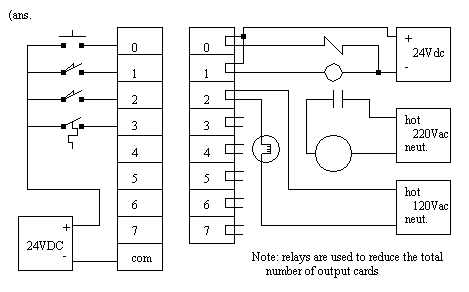

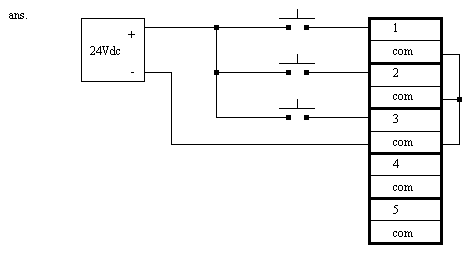























































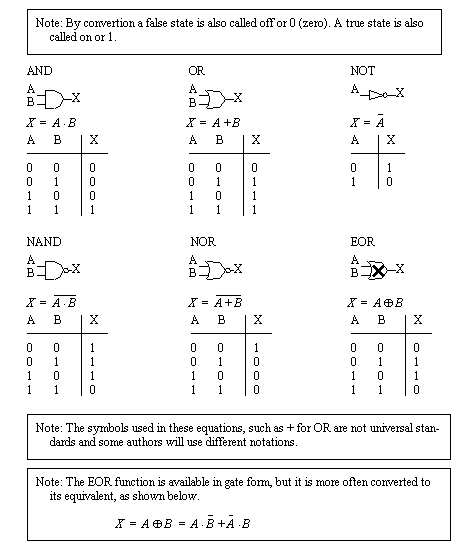



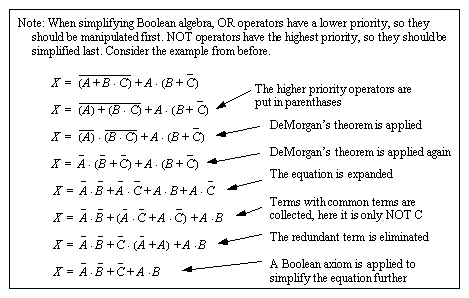




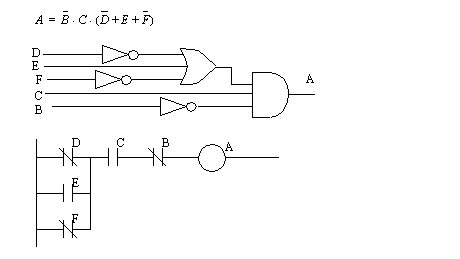






































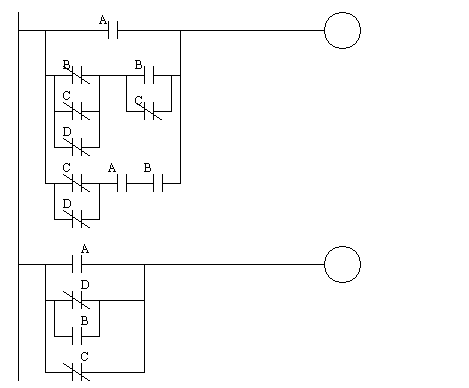





















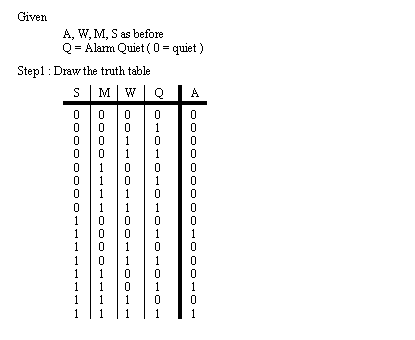








































































































































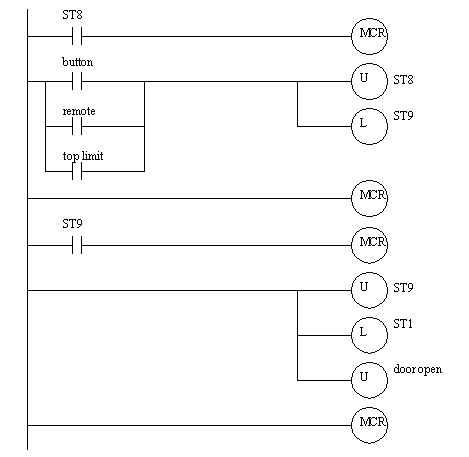






















































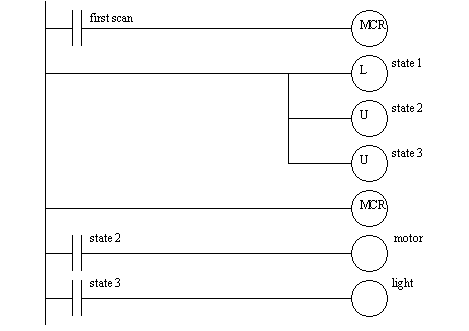















































































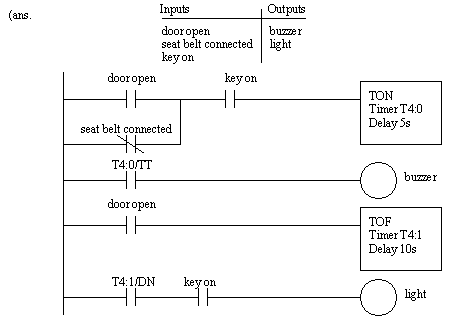





























































































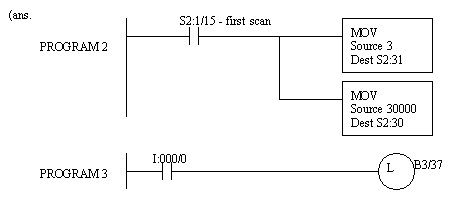





























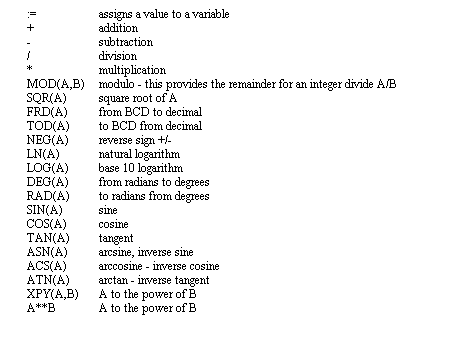








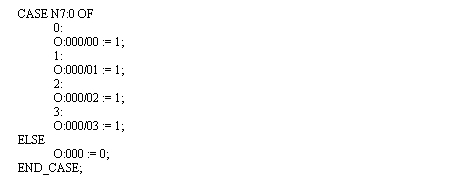




























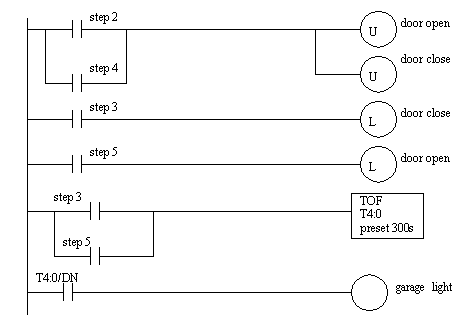



























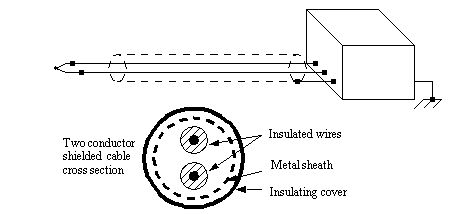


























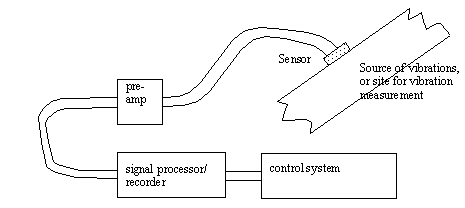







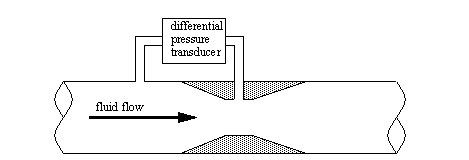











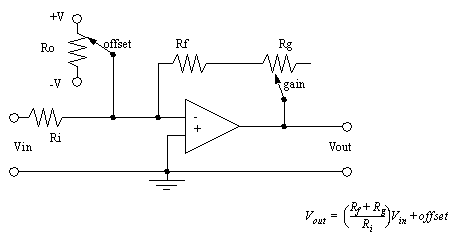










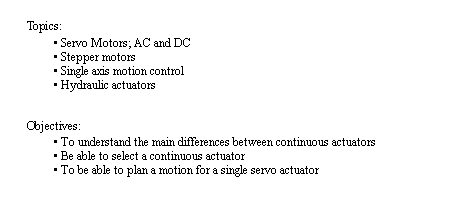














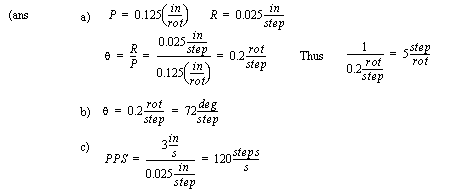







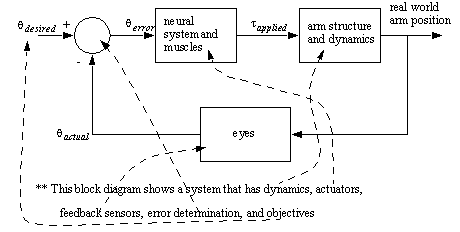


























 .
.













 bytes each second. Lower baud rates are 120, 300, 1.2K, 2.4K and
9.6K. Higher speeds are 19.2K, 28.8K and 33.3K. (Note: When this is set
improperly you will get many transmission errors, or garbage on your
screen.)
bytes each second. Lower baud rates are 120, 300, 1.2K, 2.4K and
9.6K. Higher speeds are 19.2K, 28.8K and 33.3K. (Note: When this is set
improperly you will get many transmission errors, or garbage on your
screen.)















